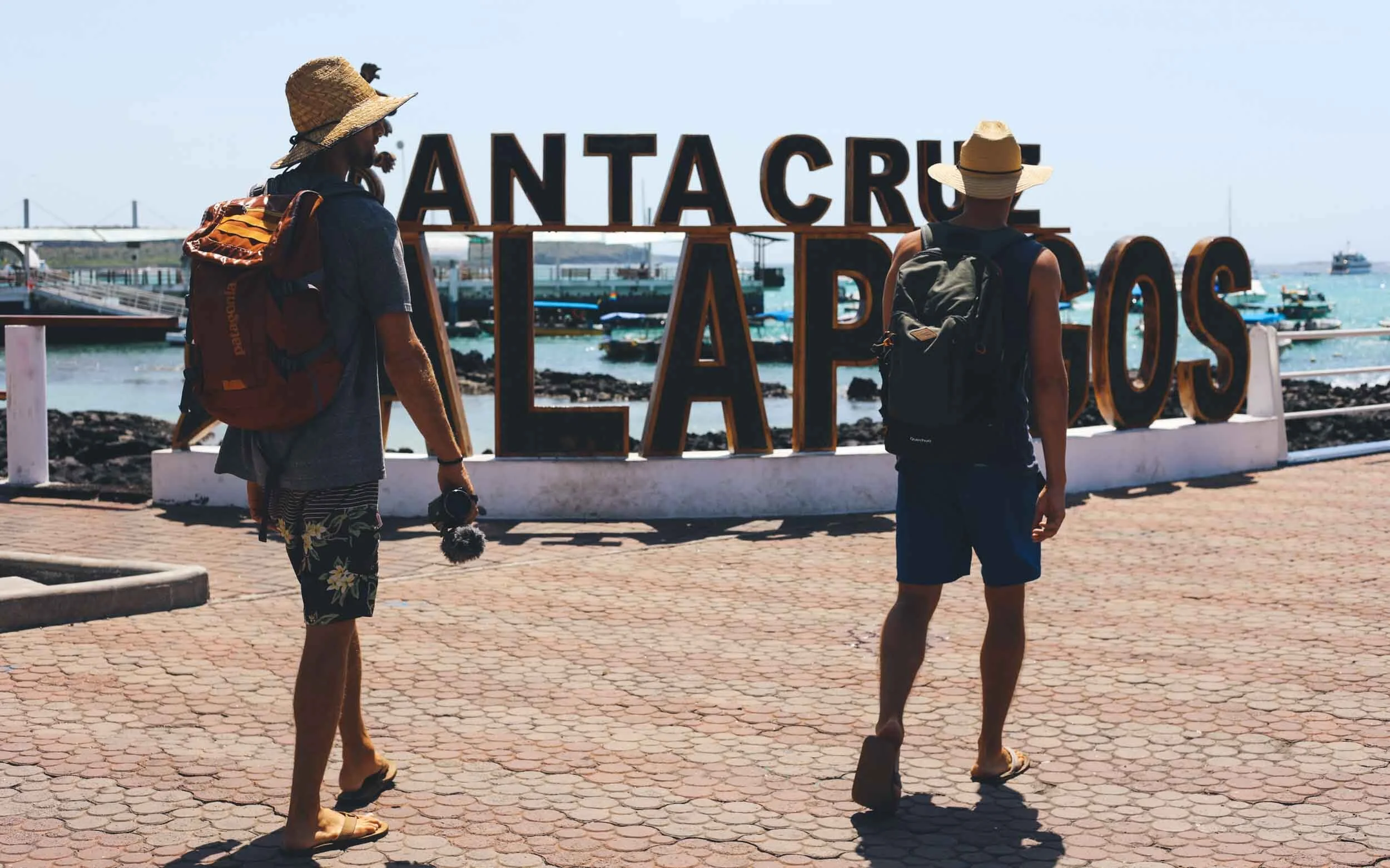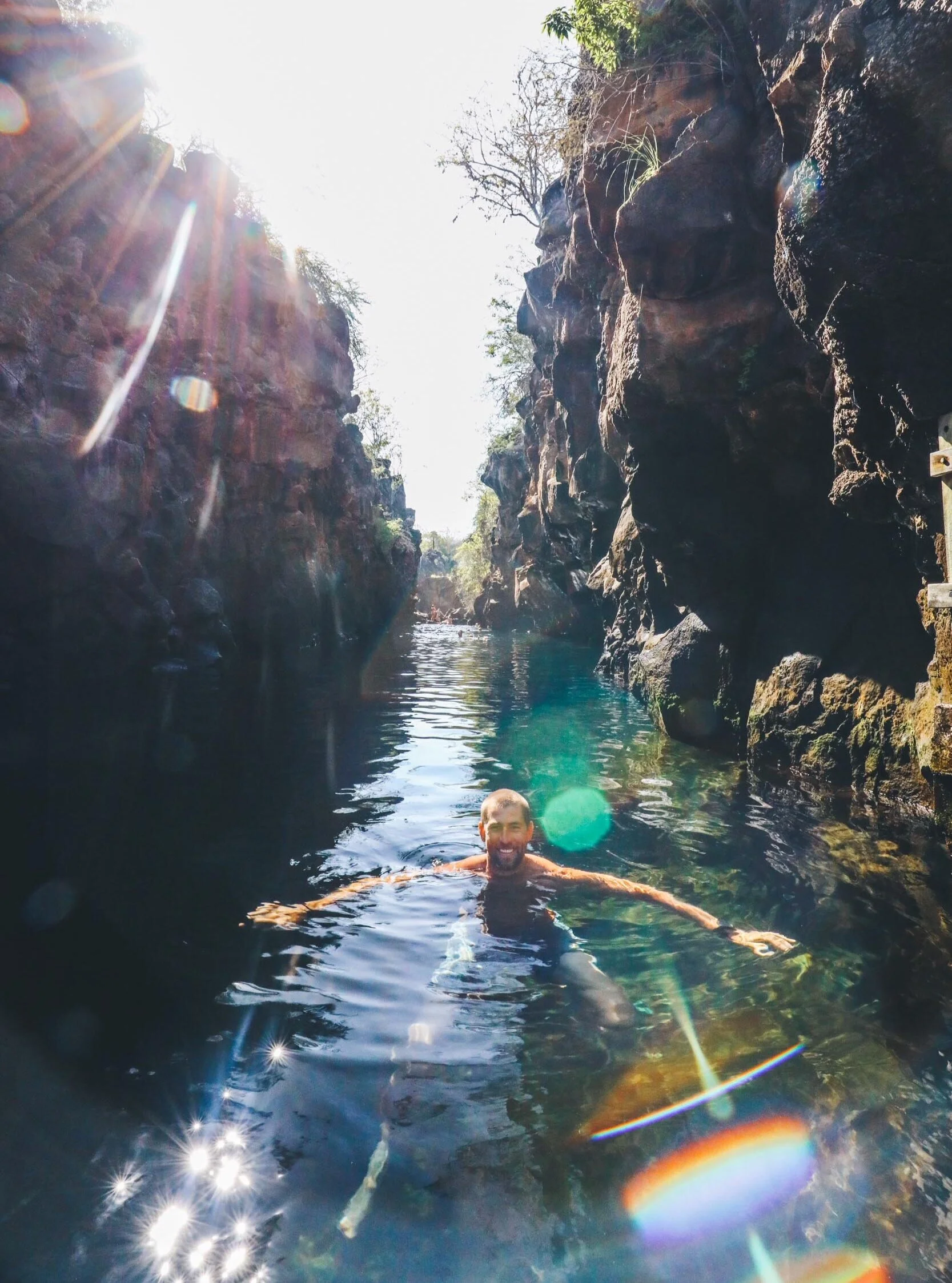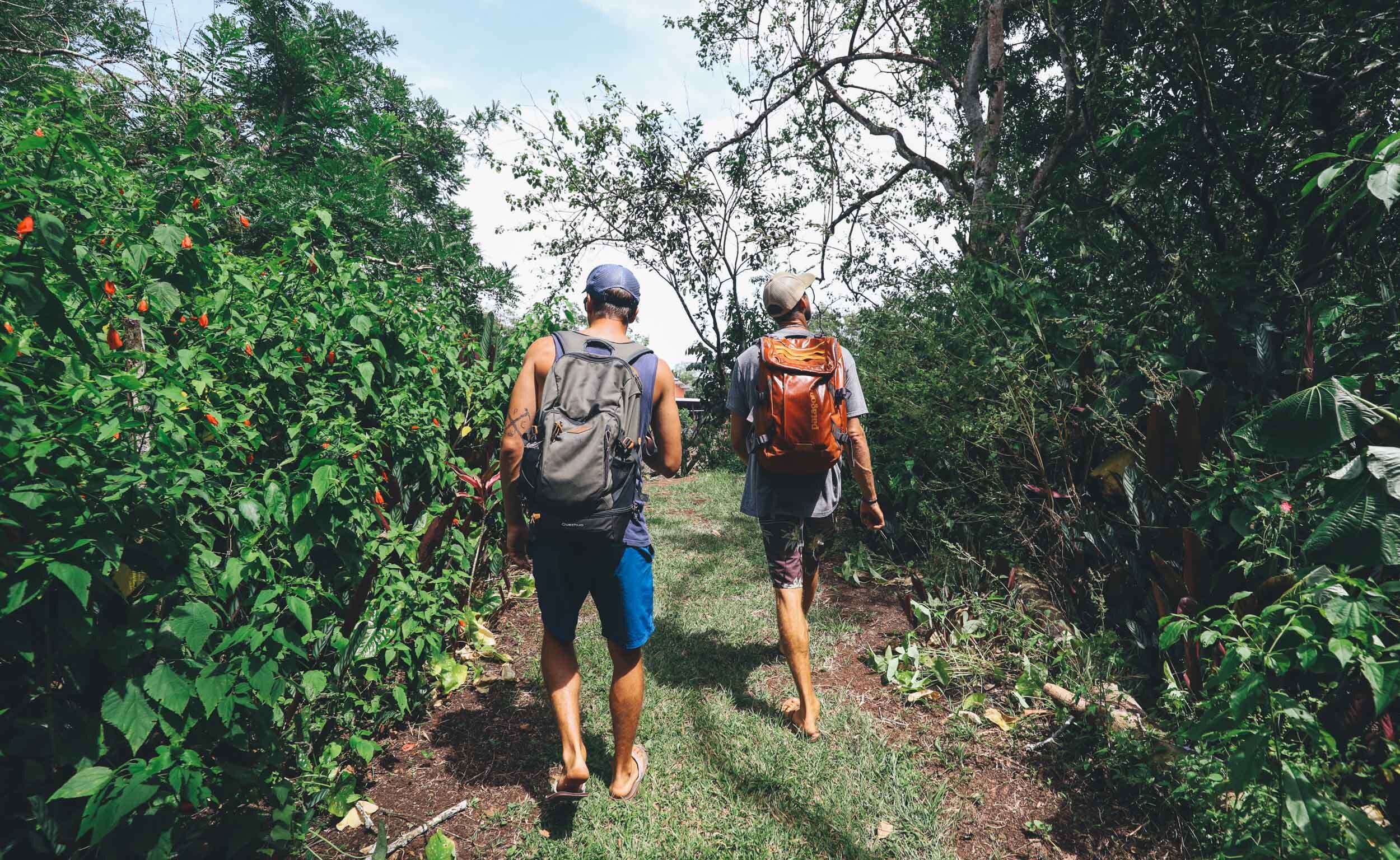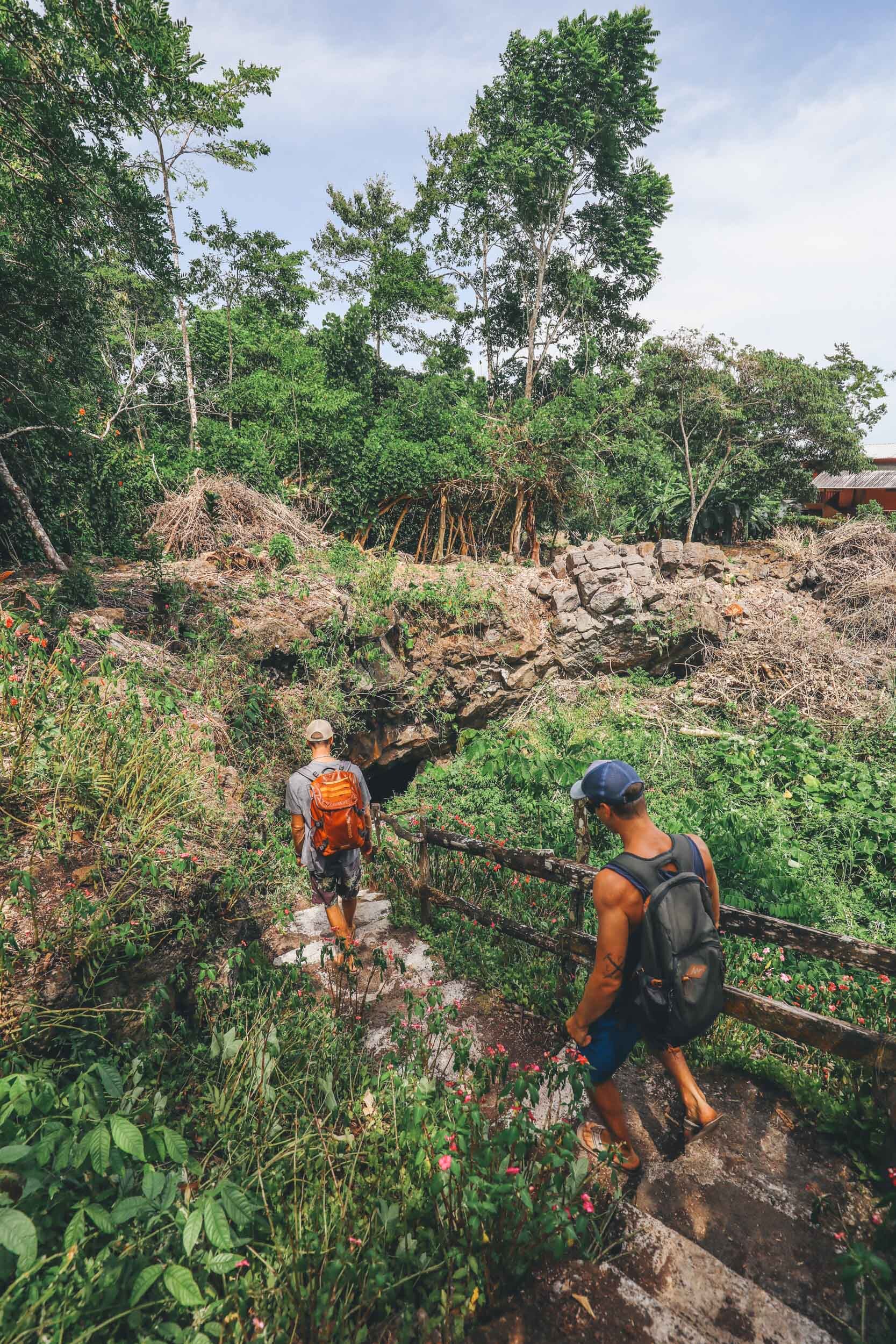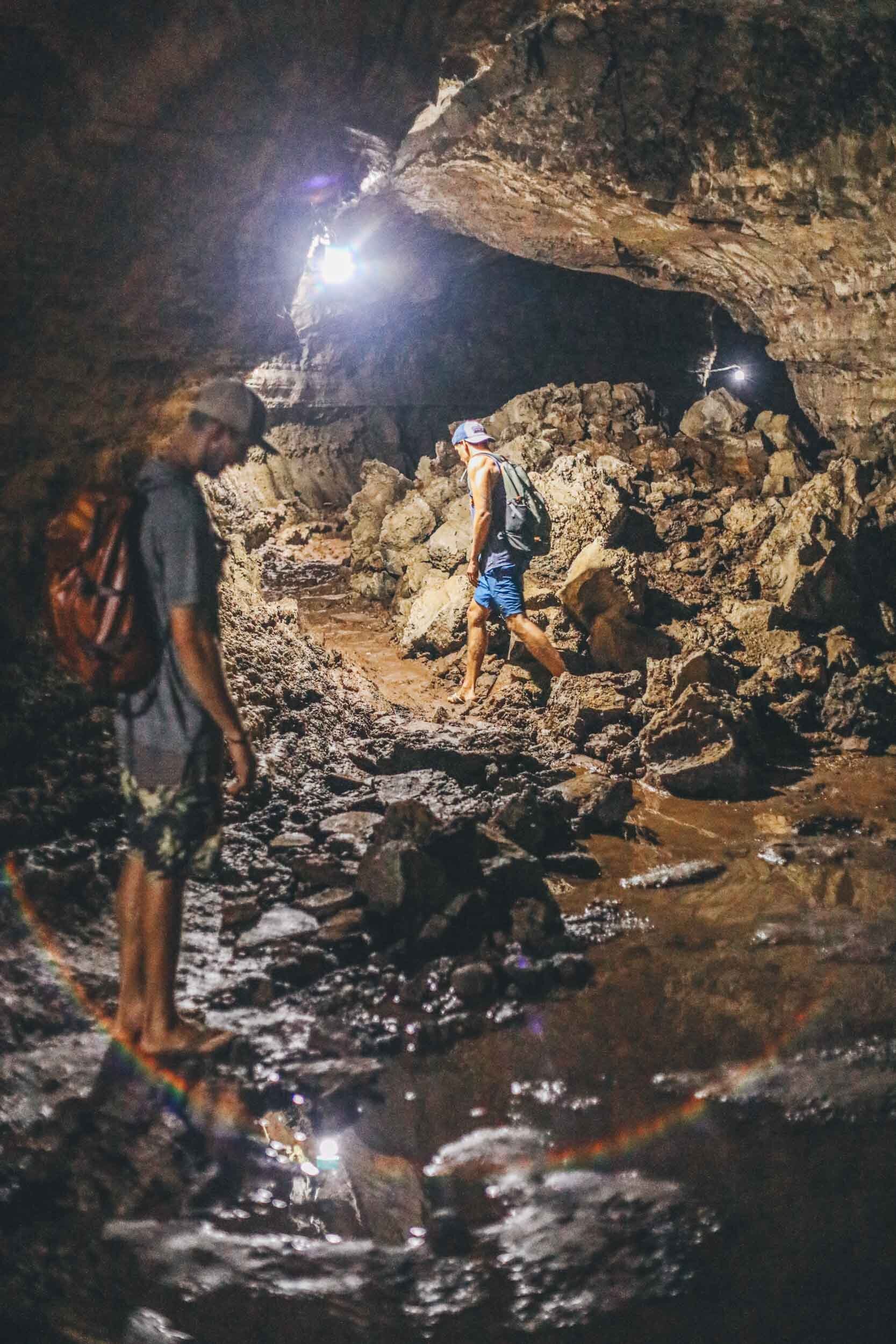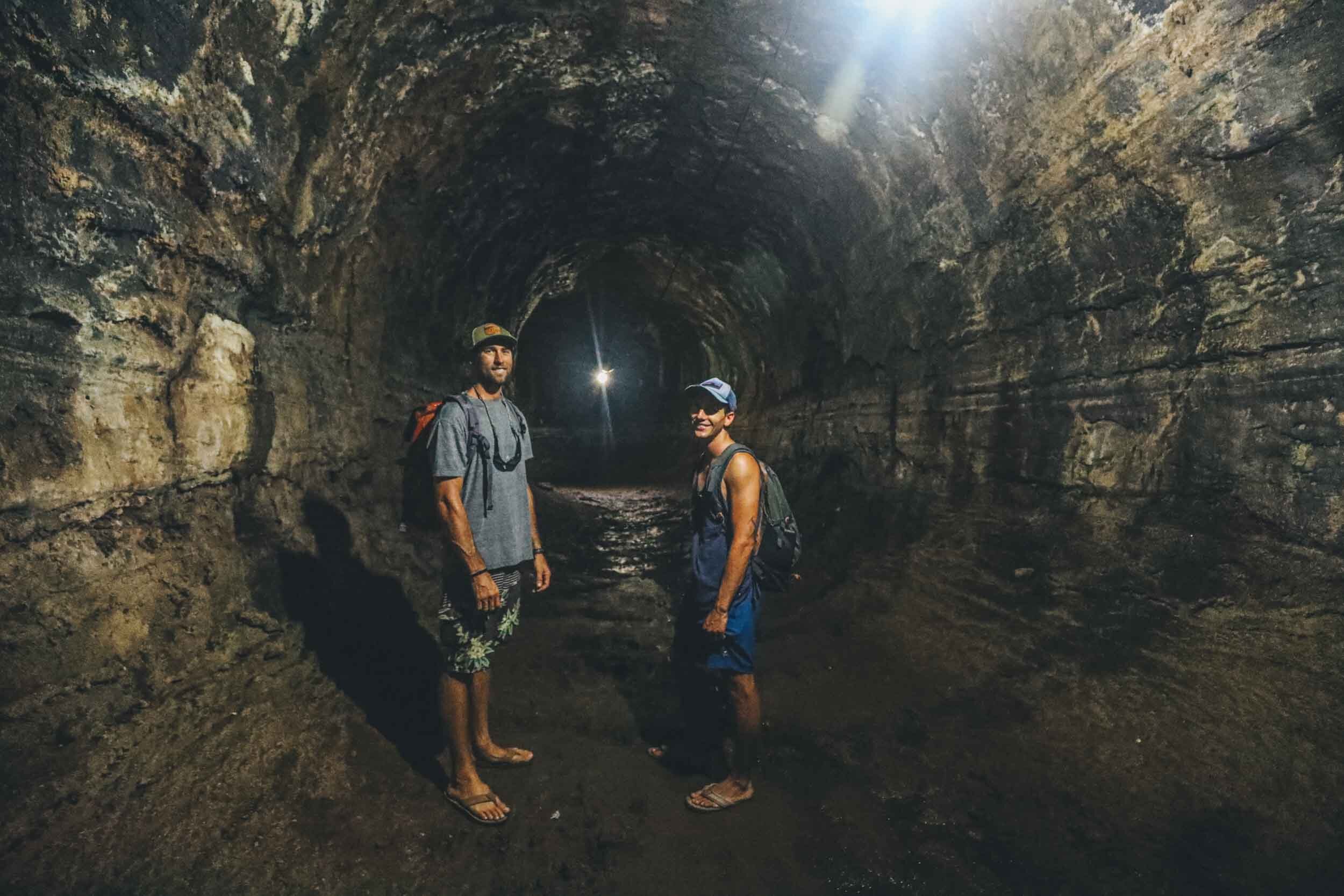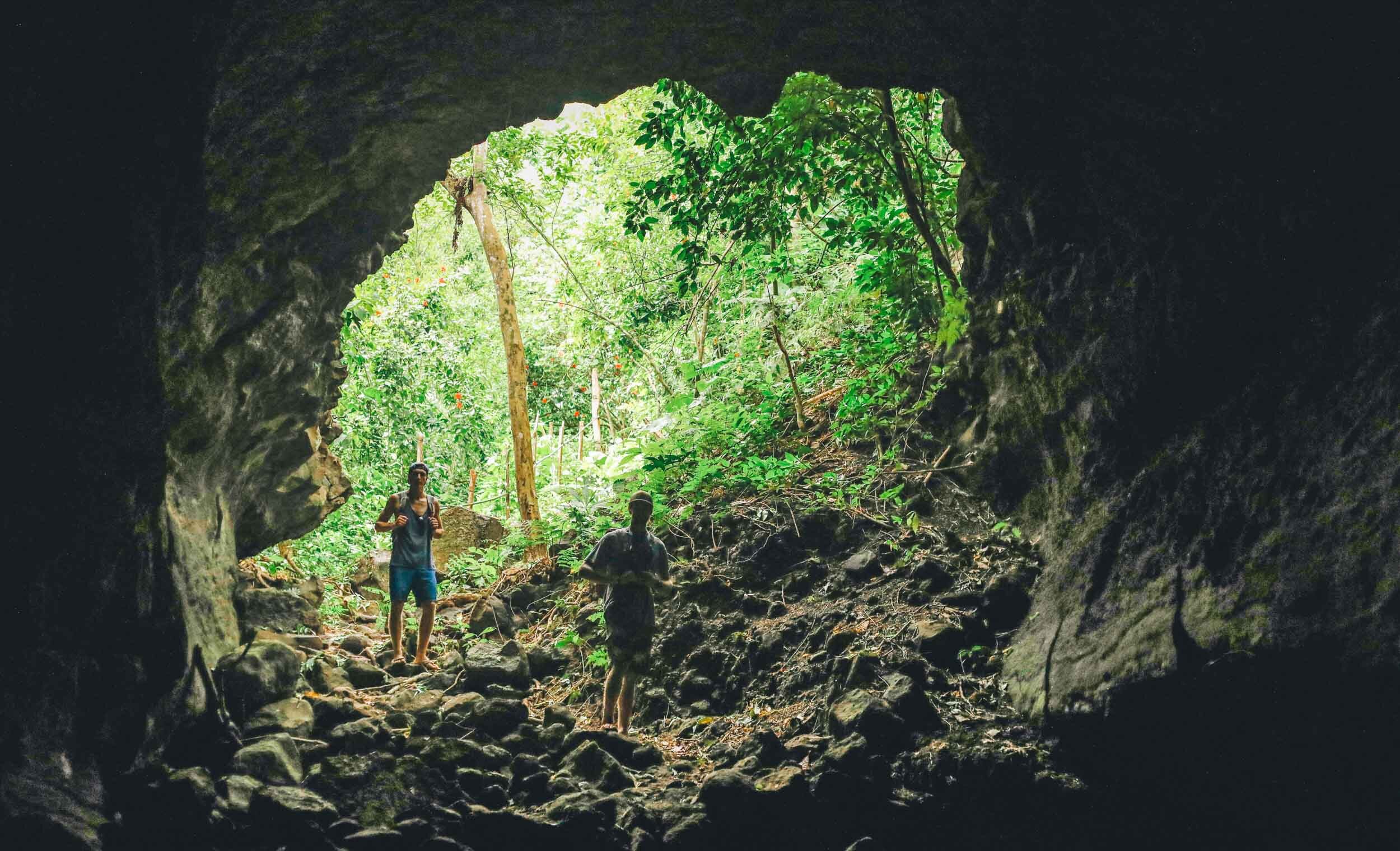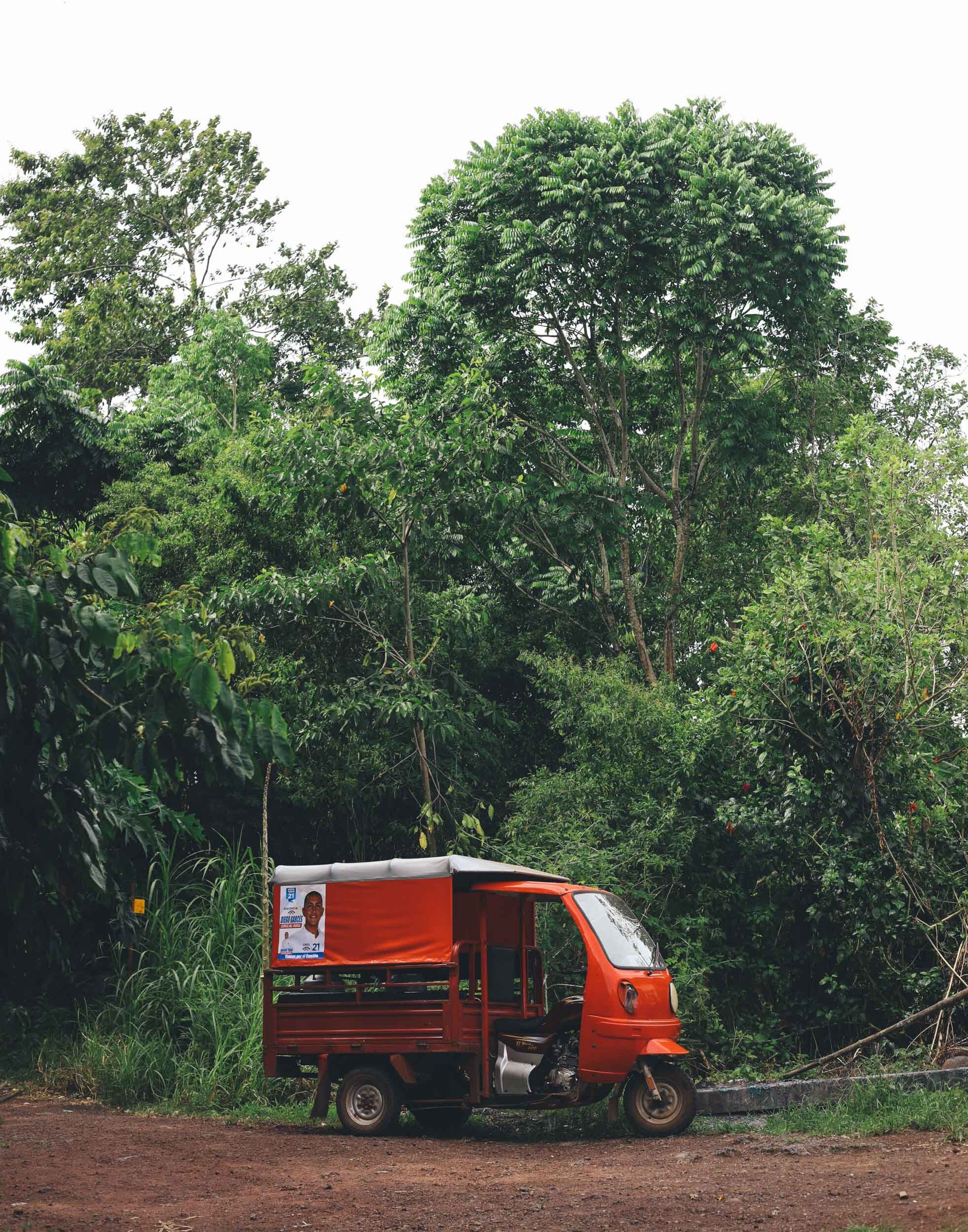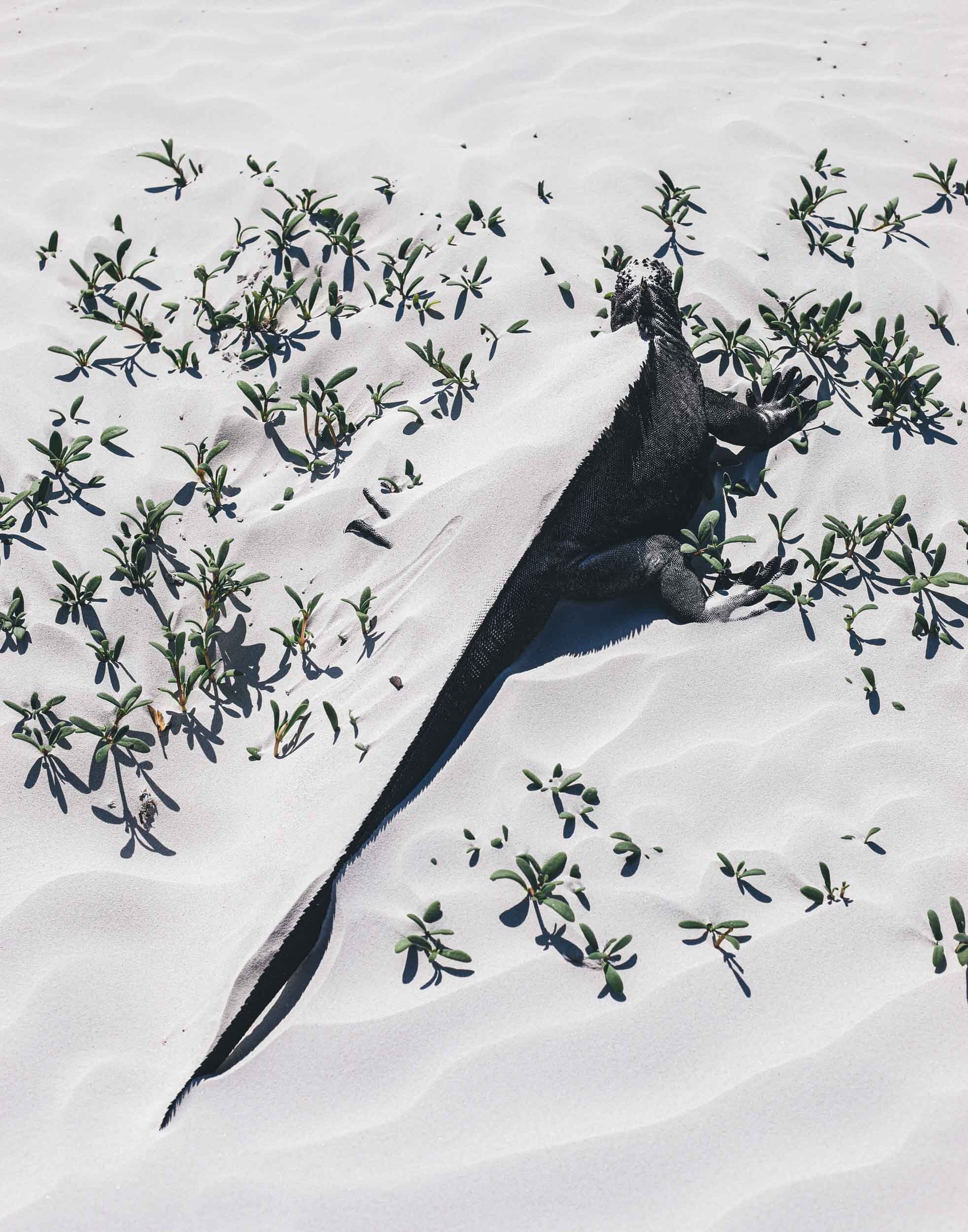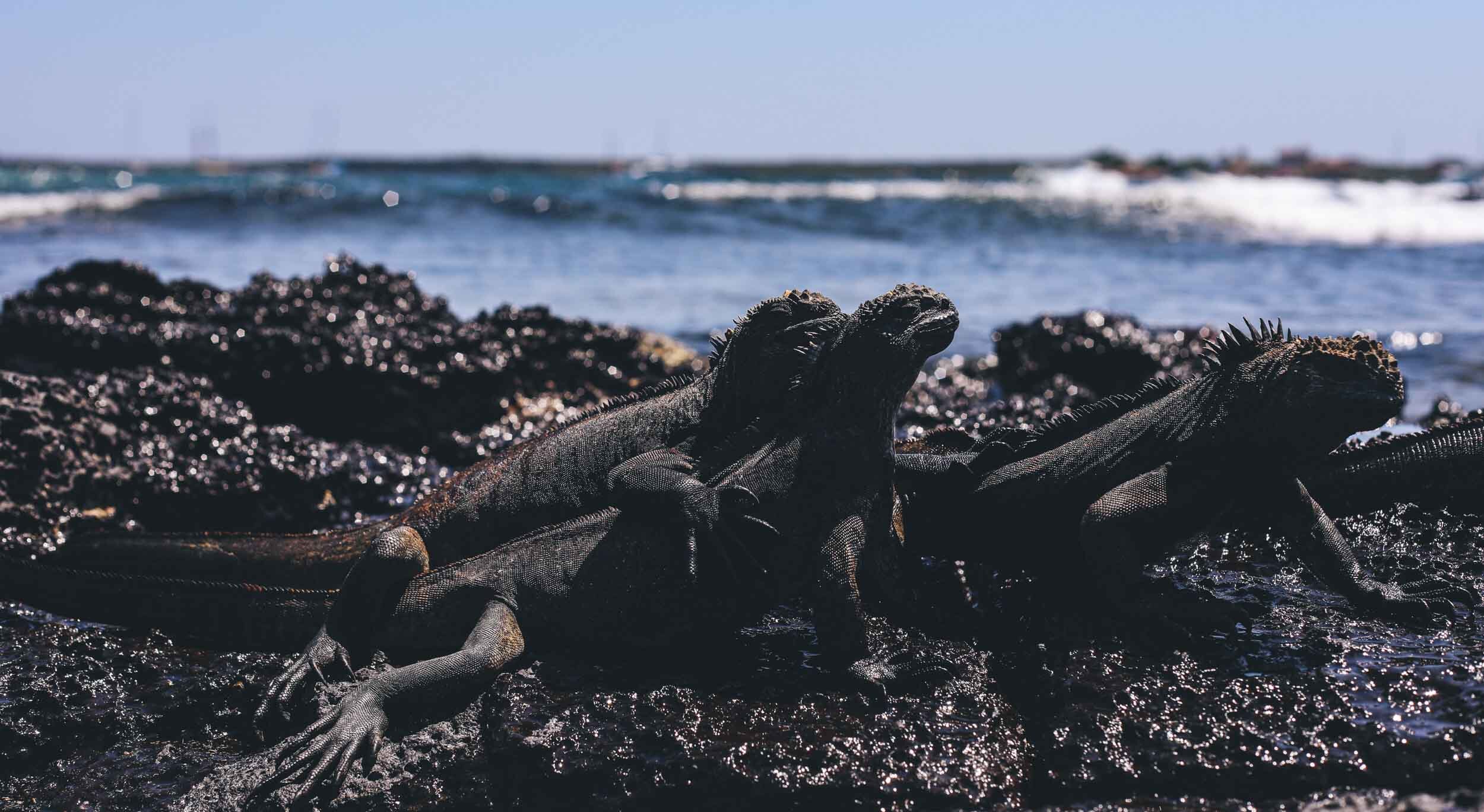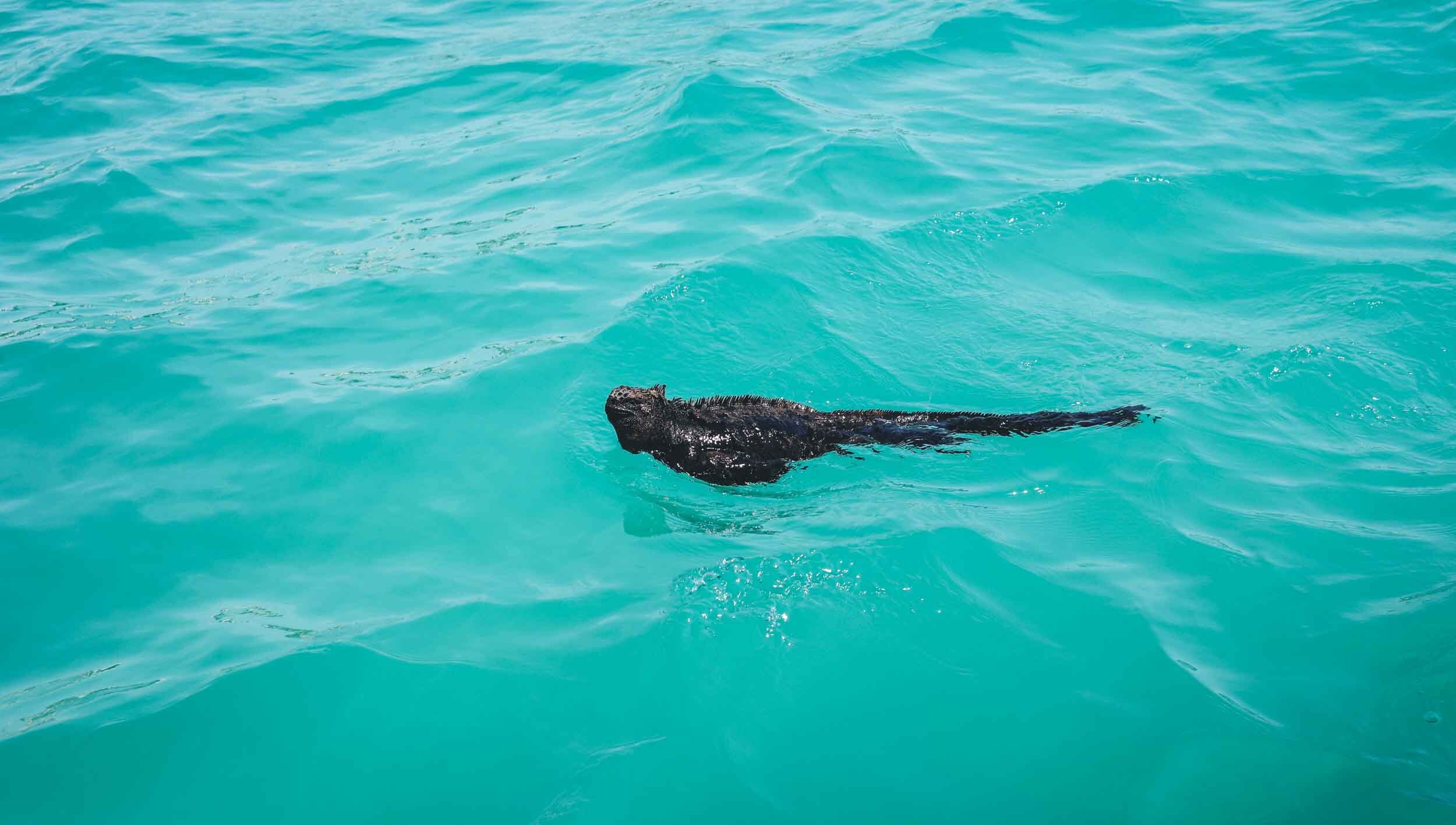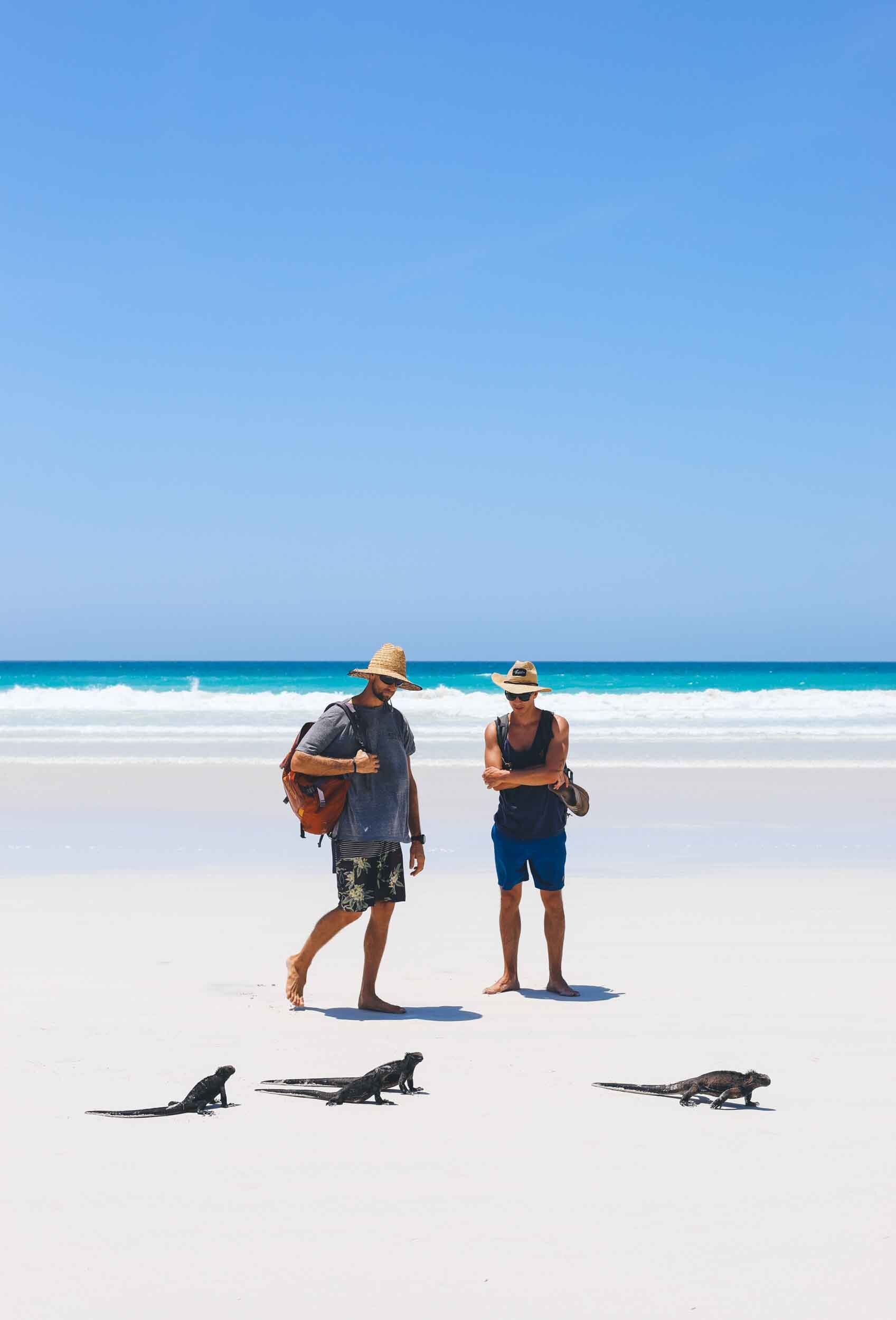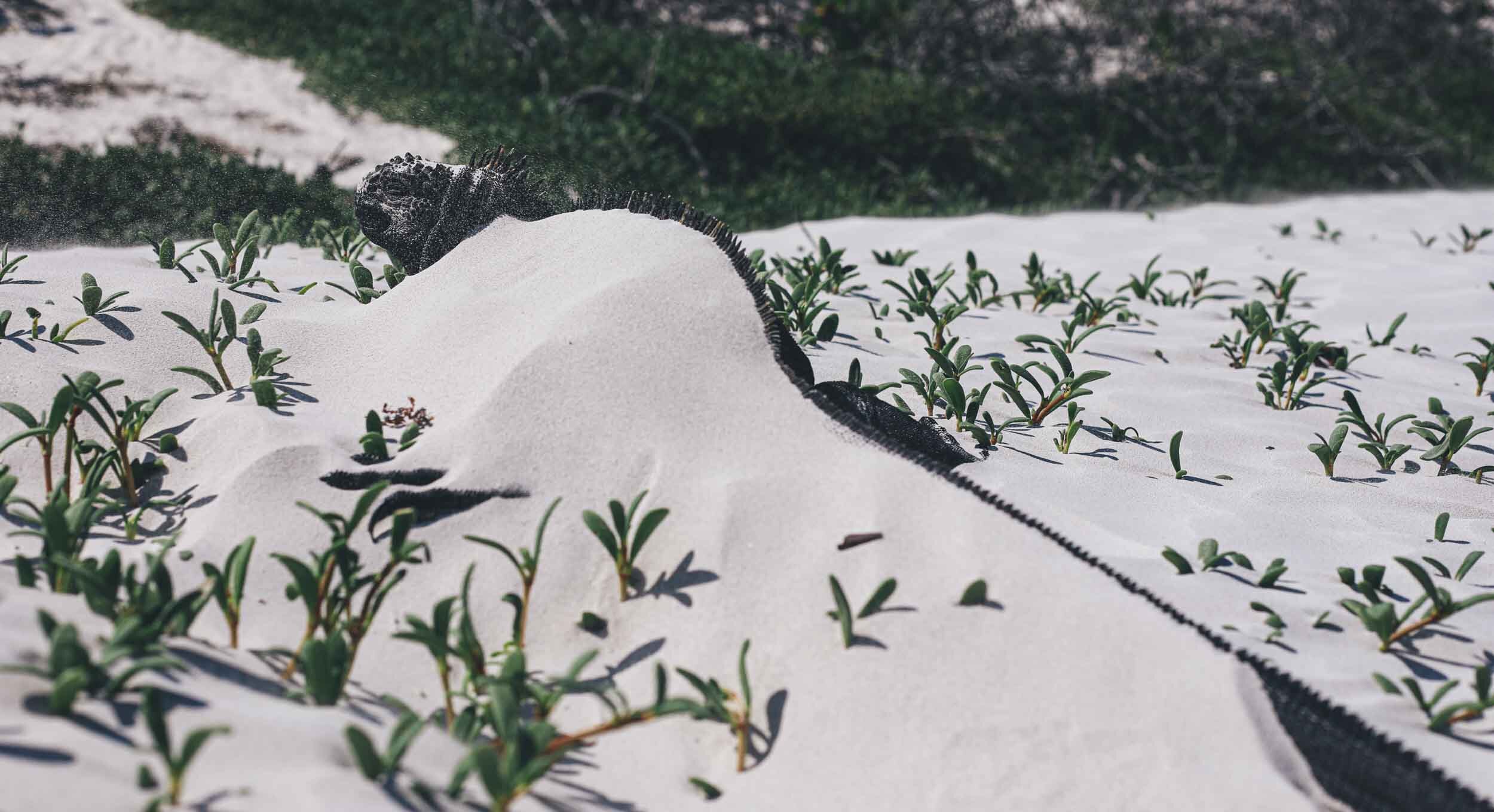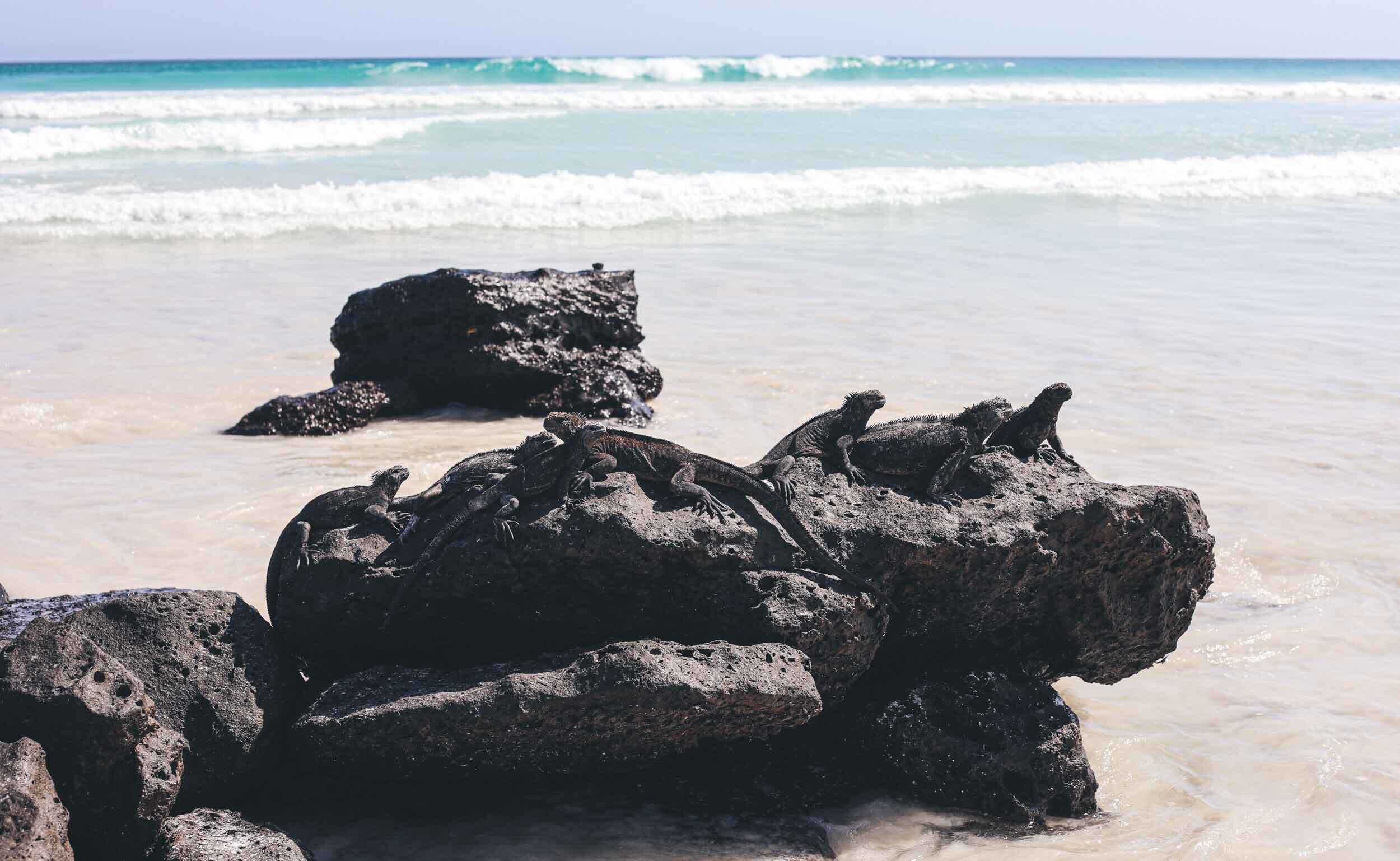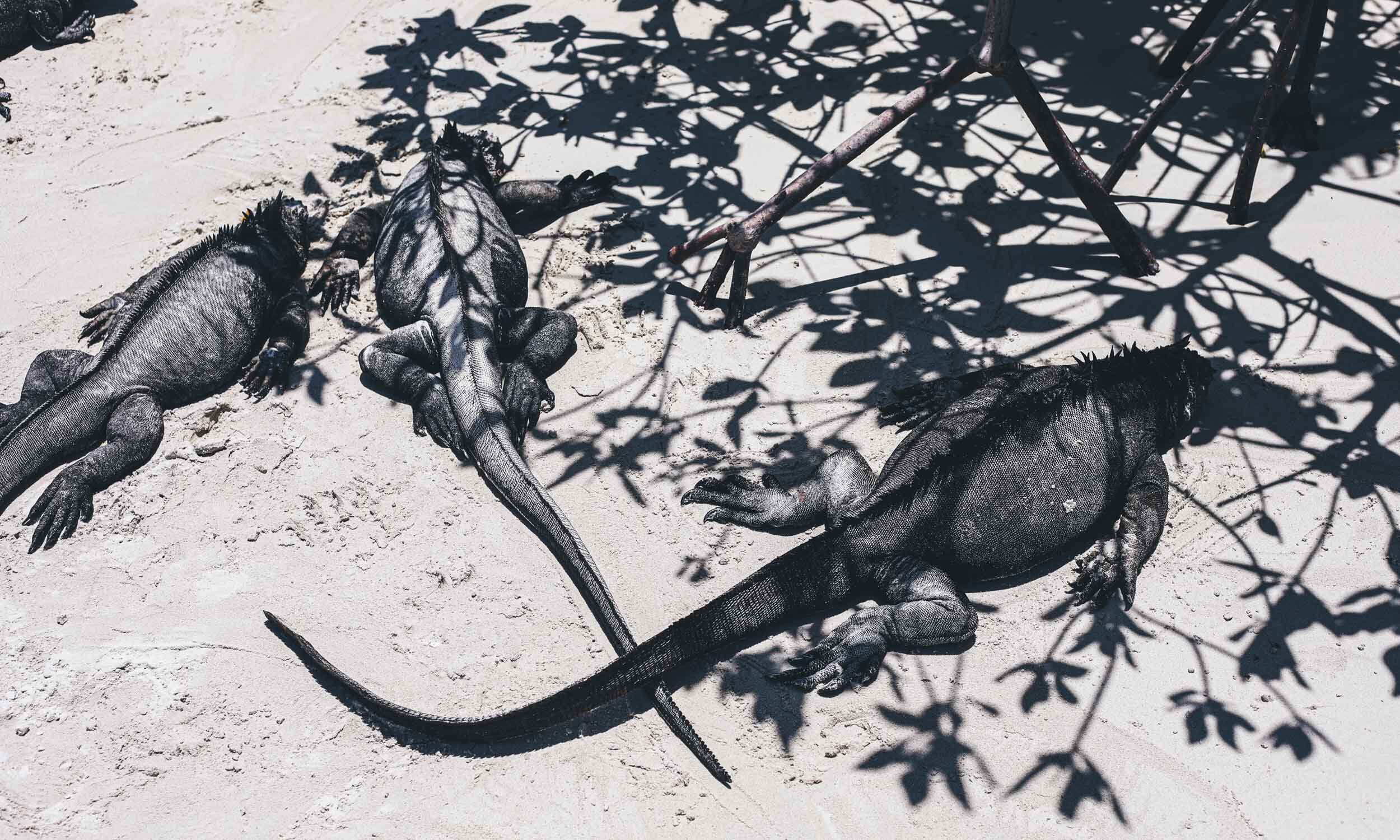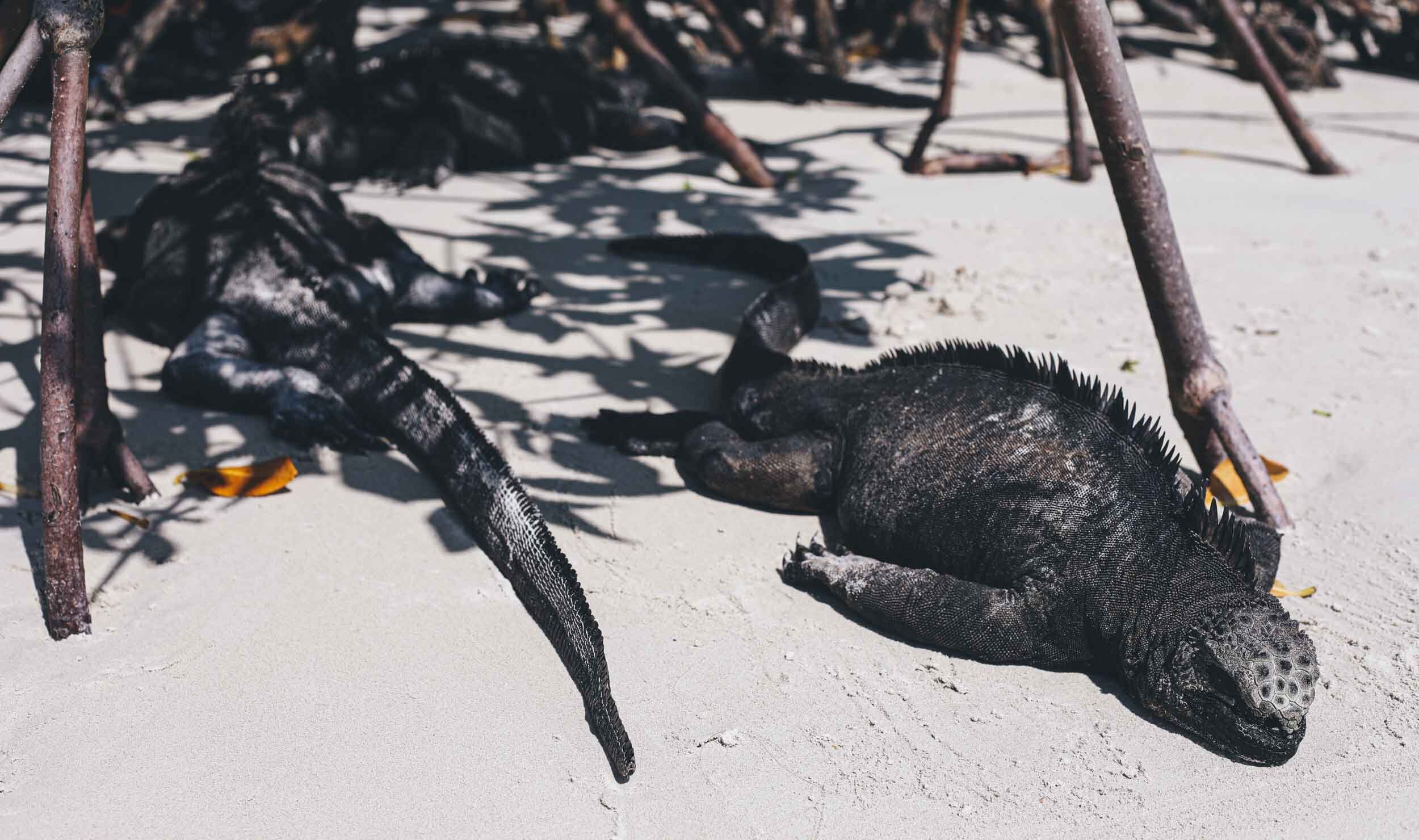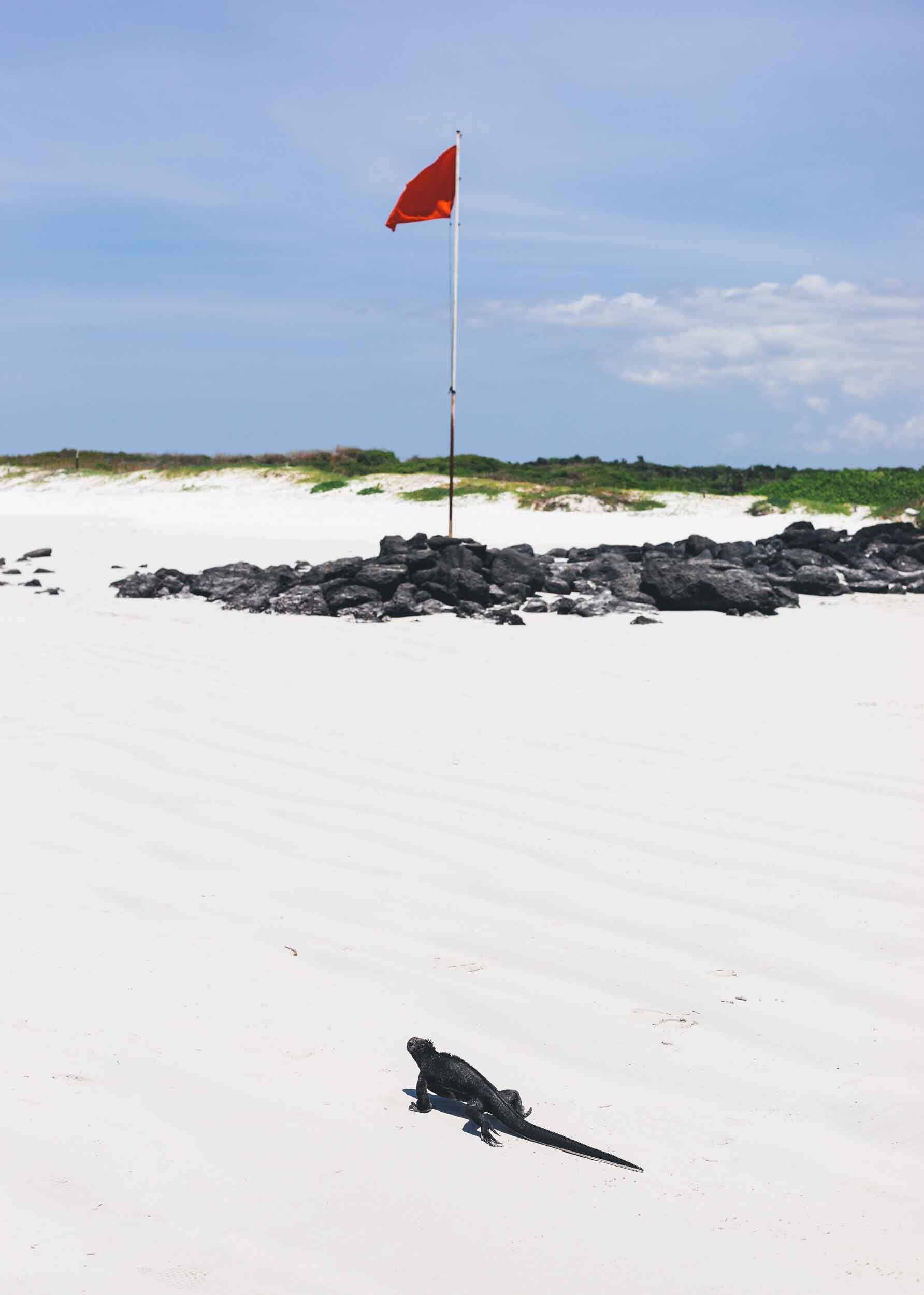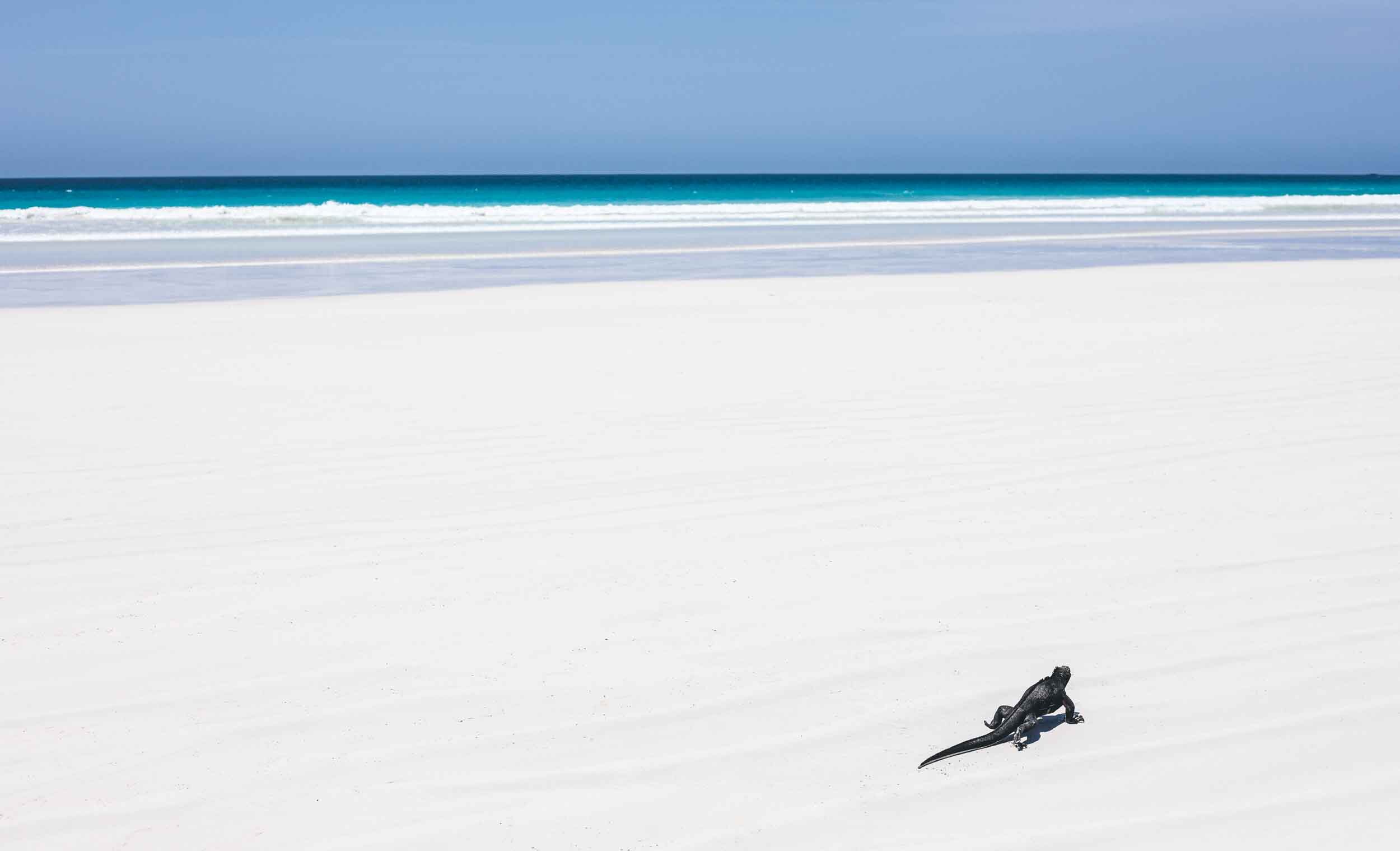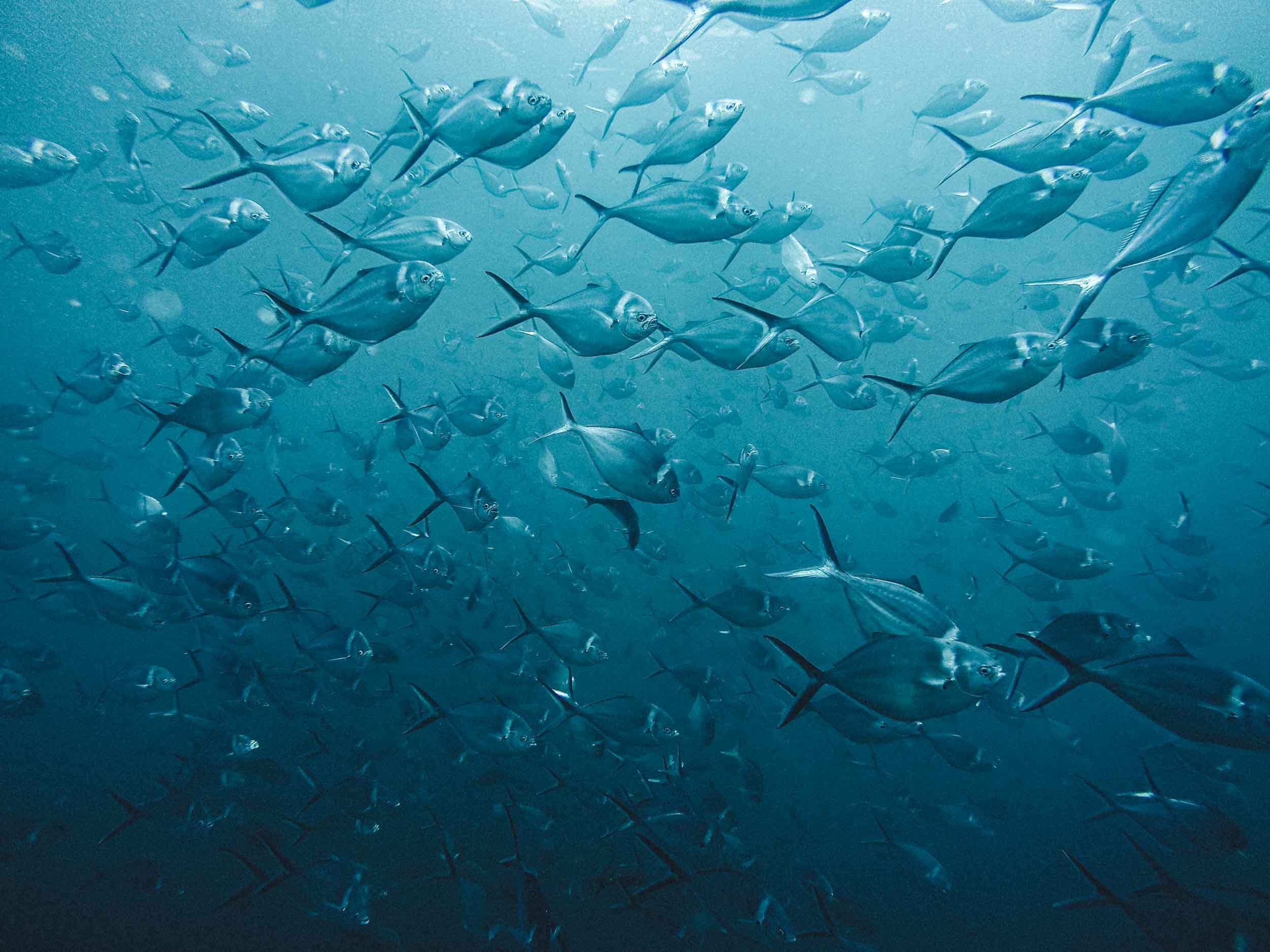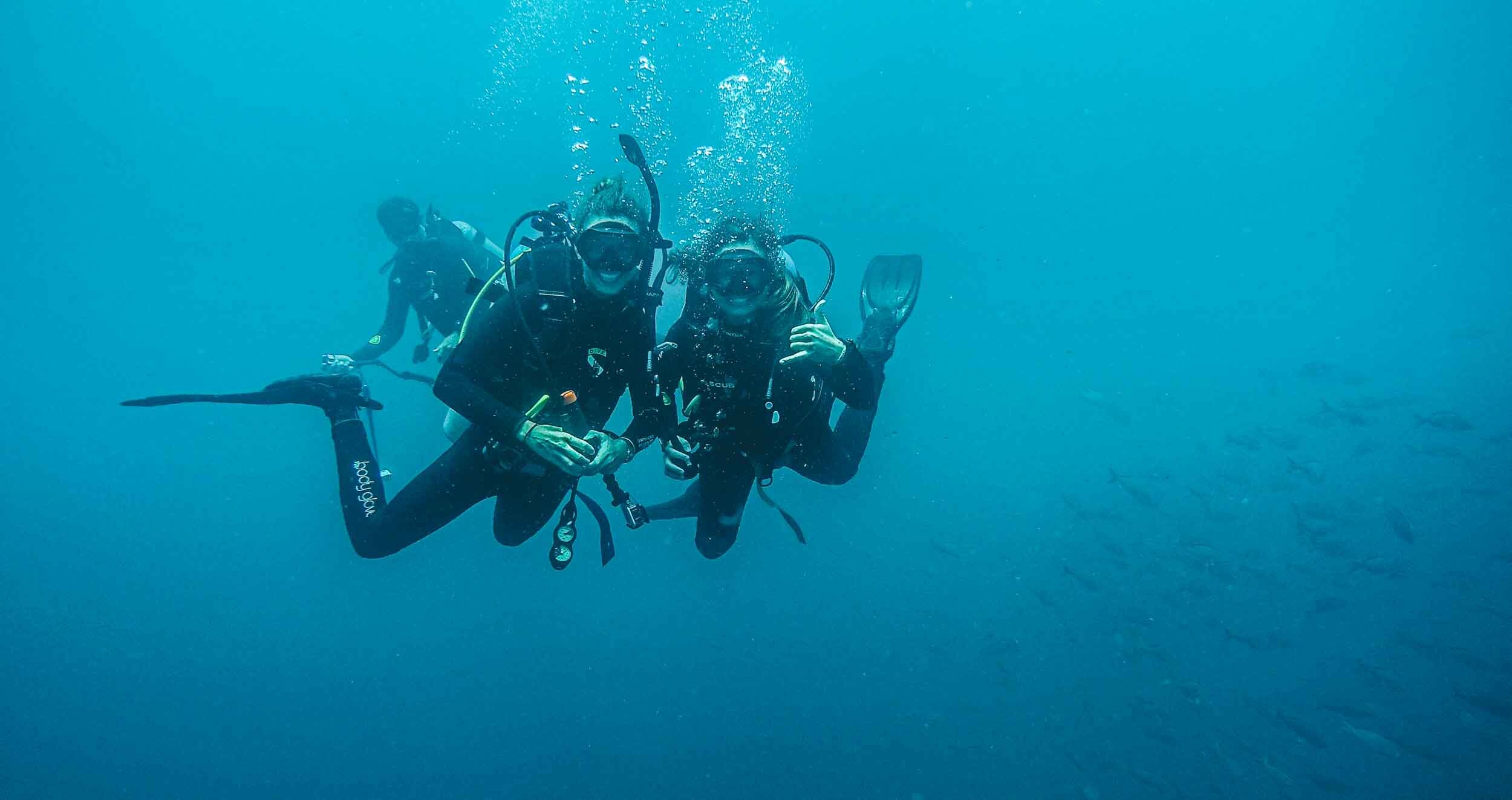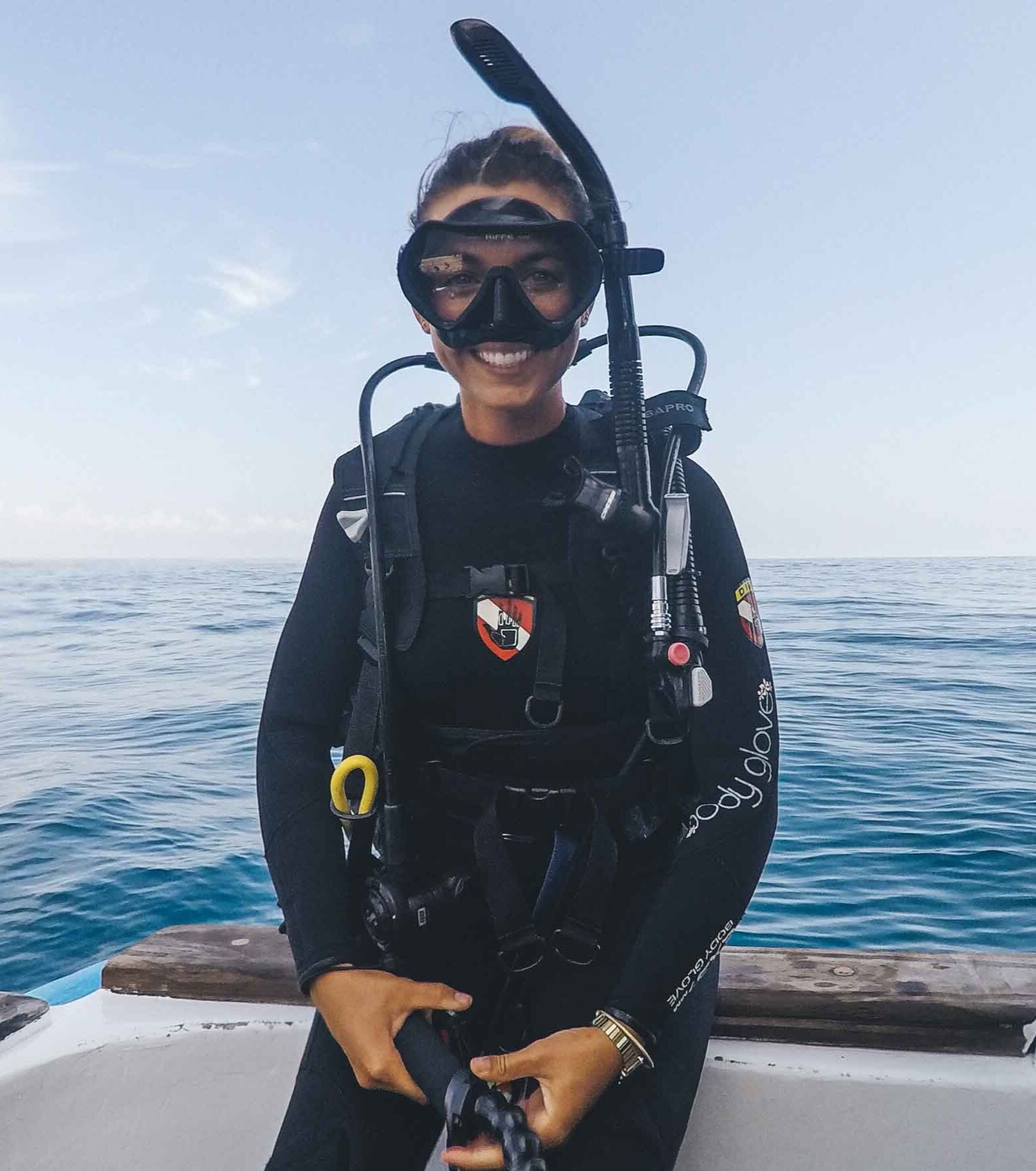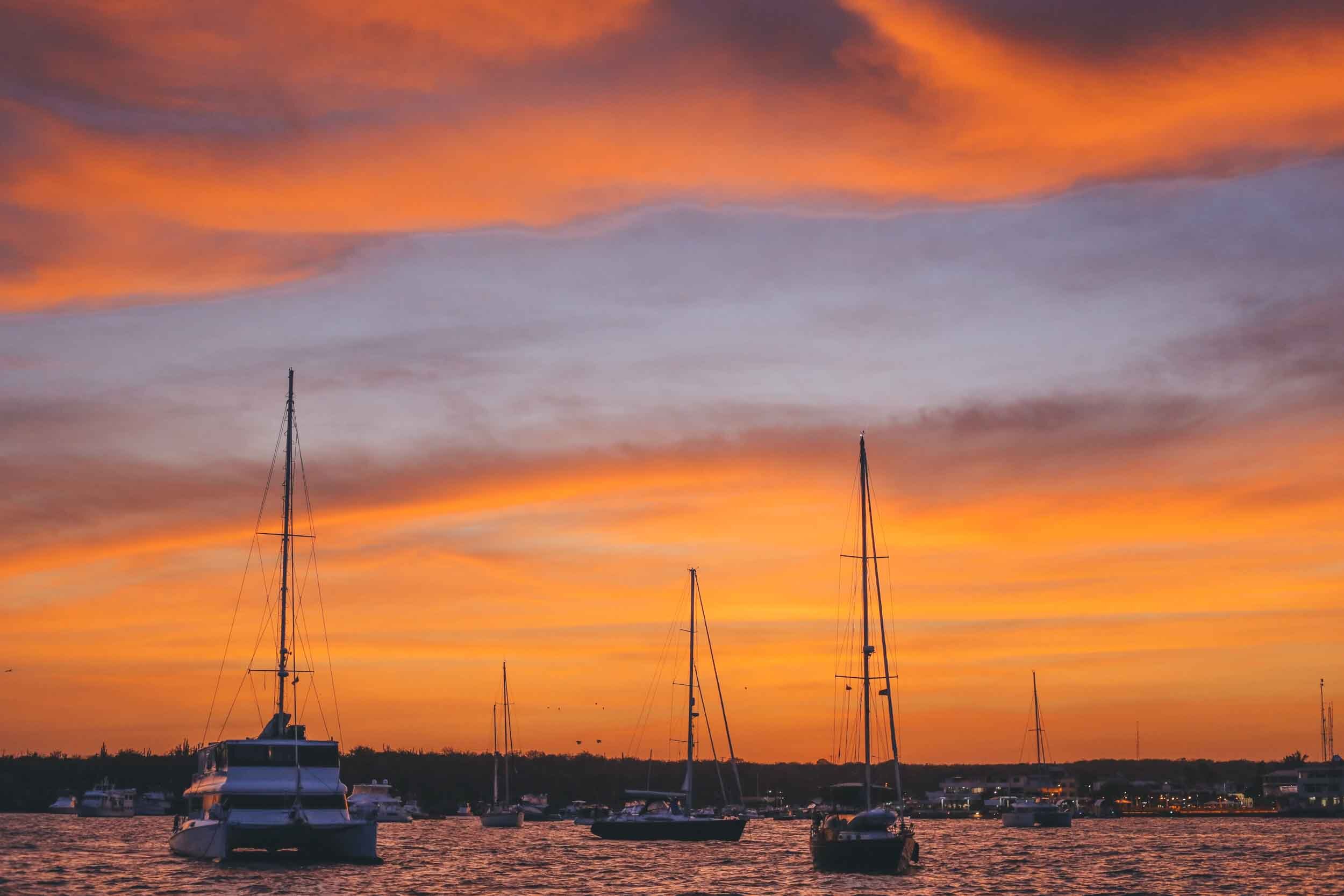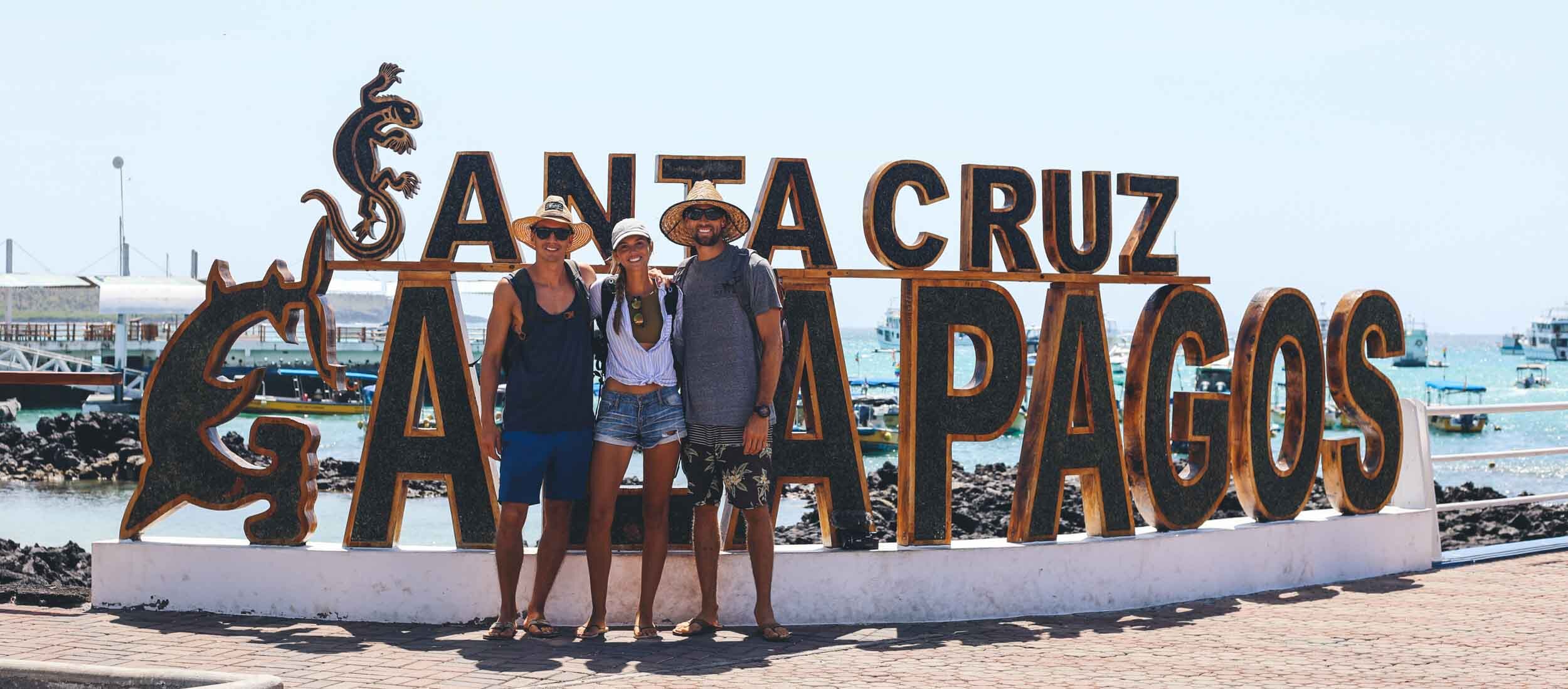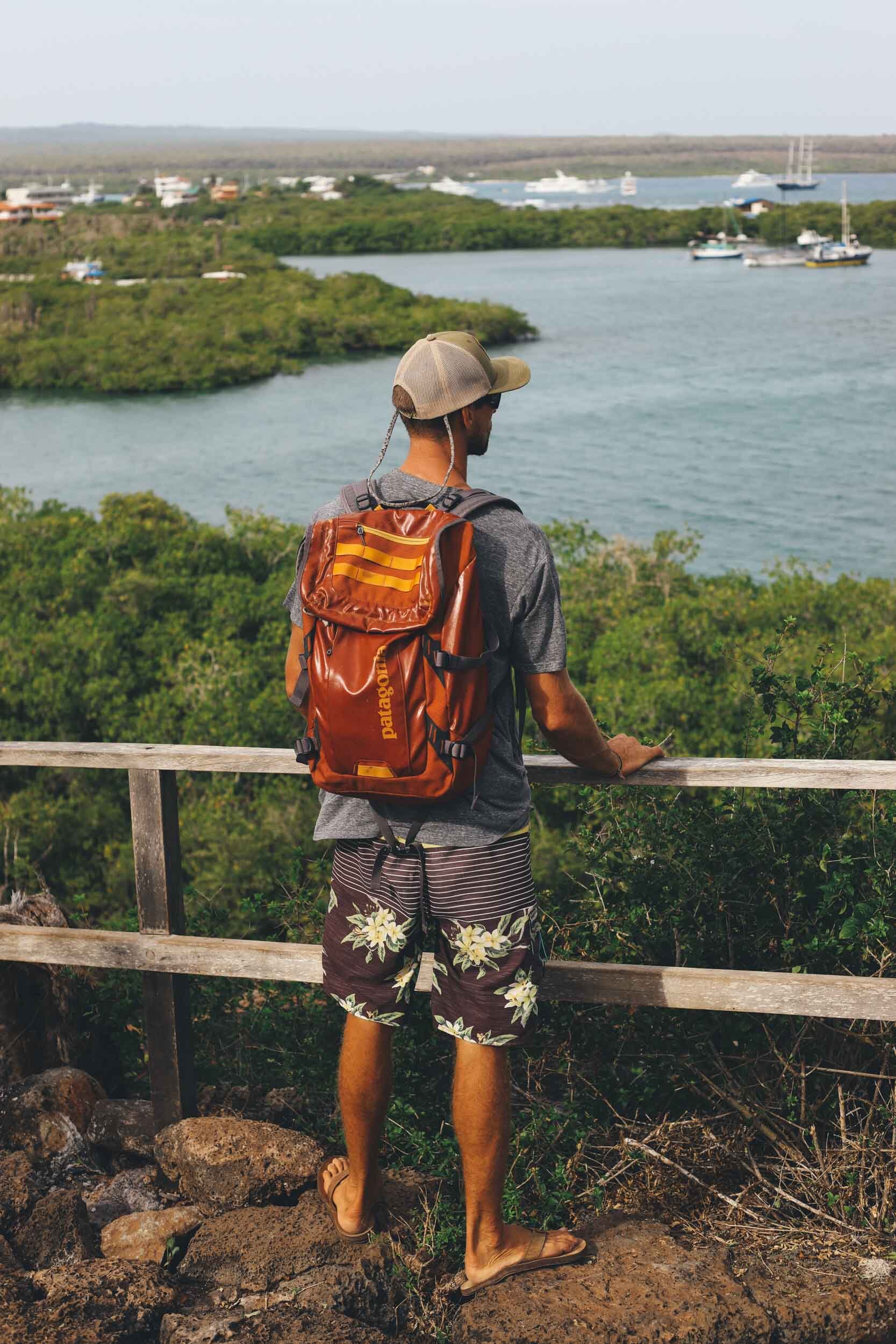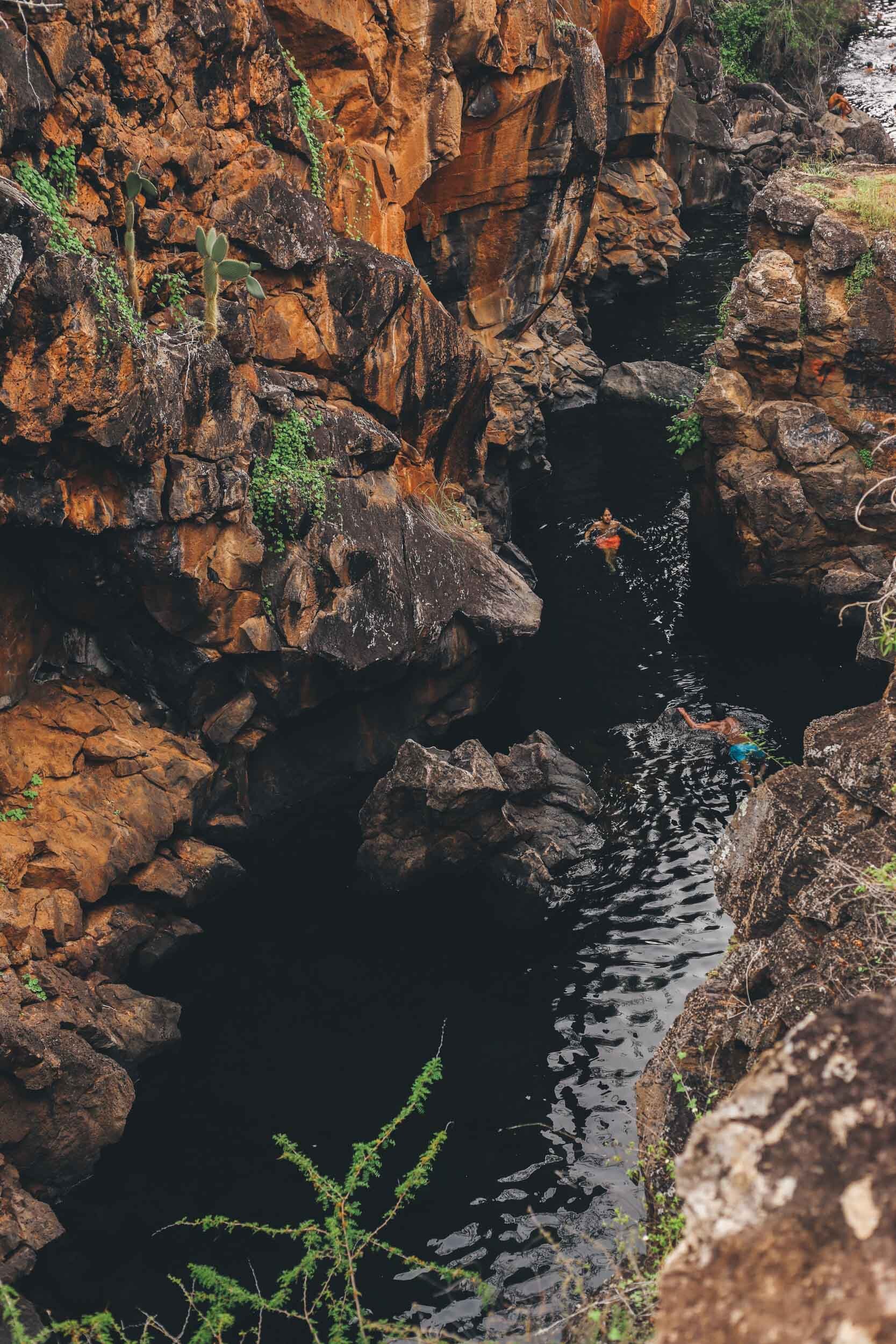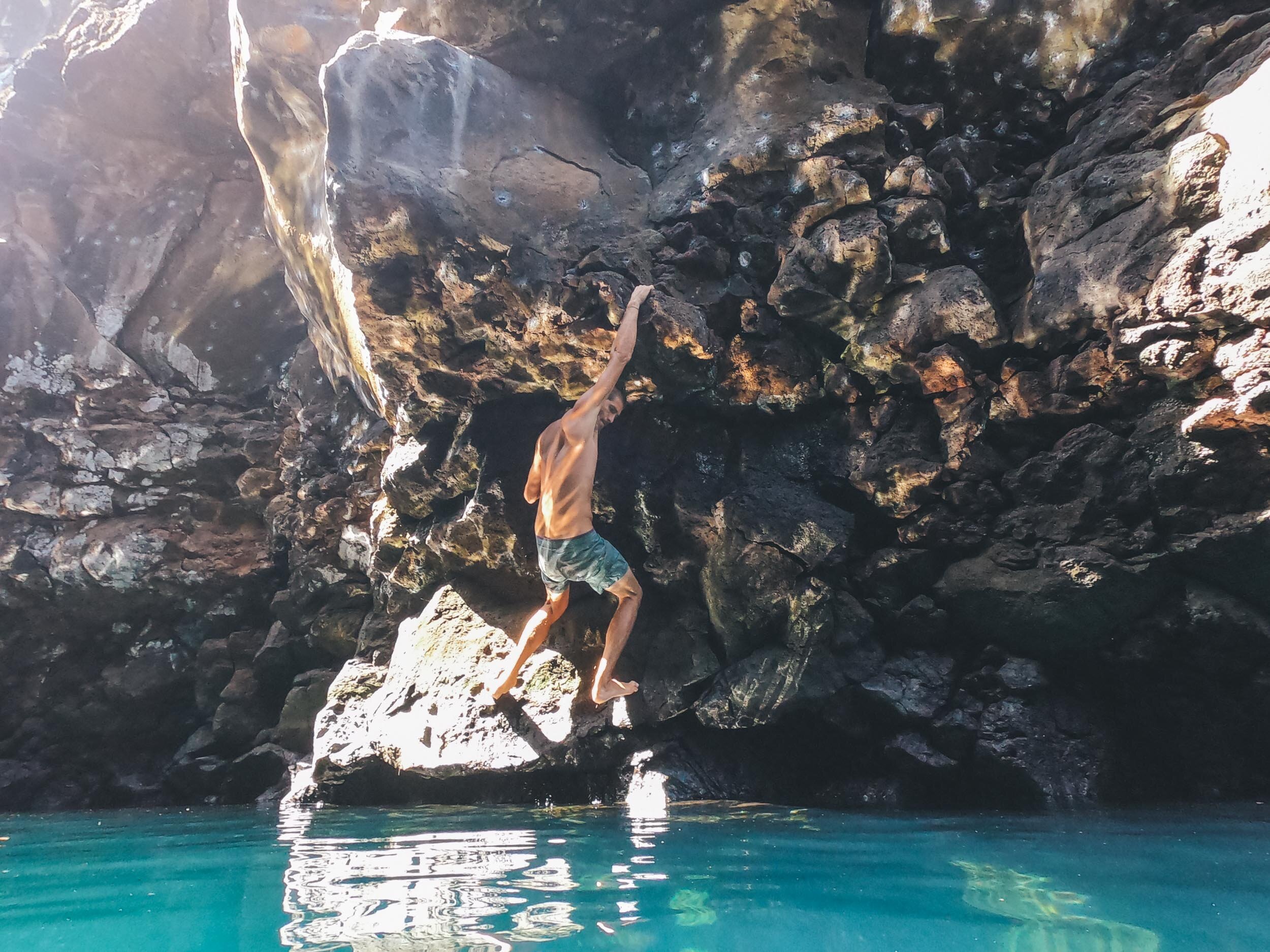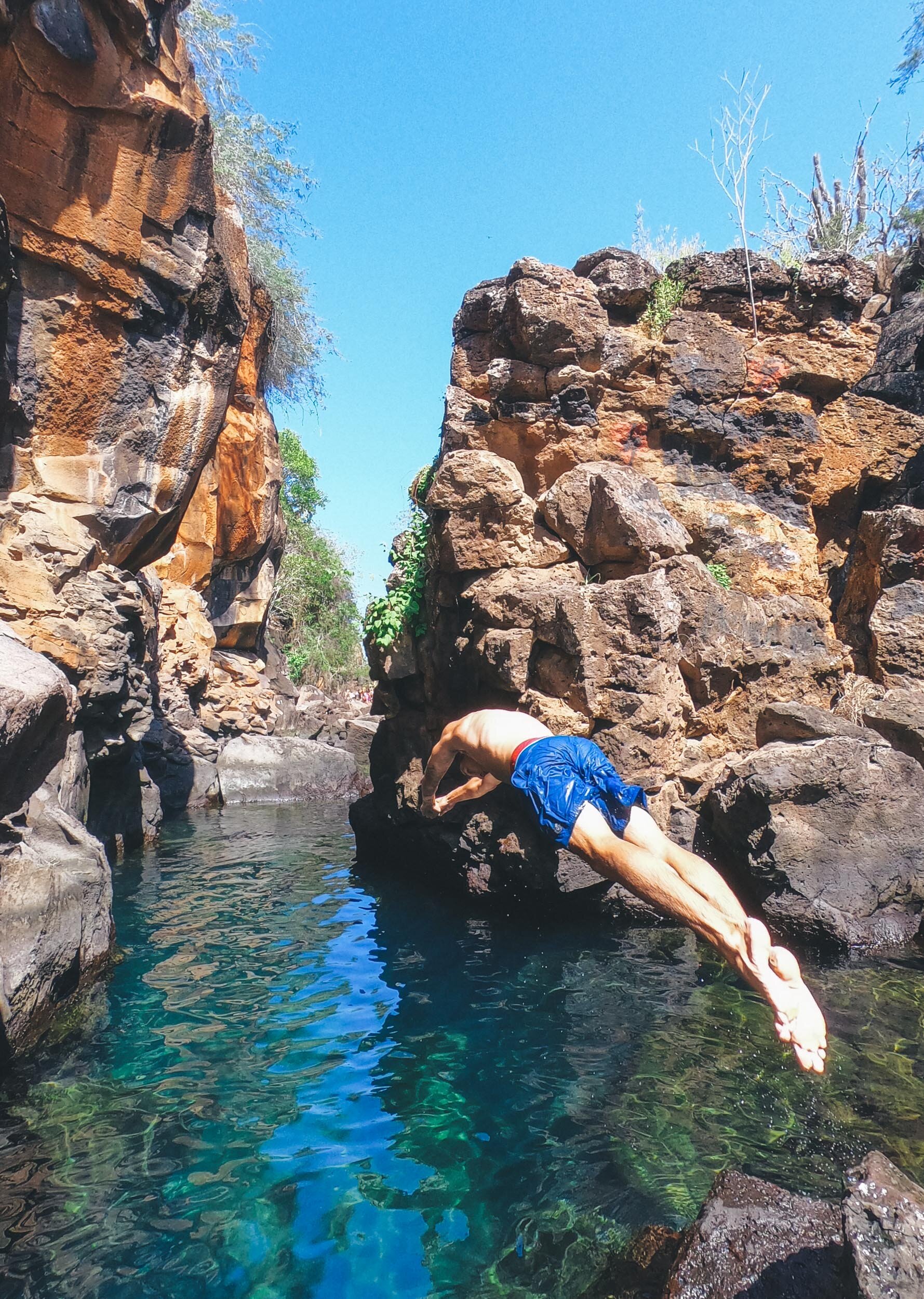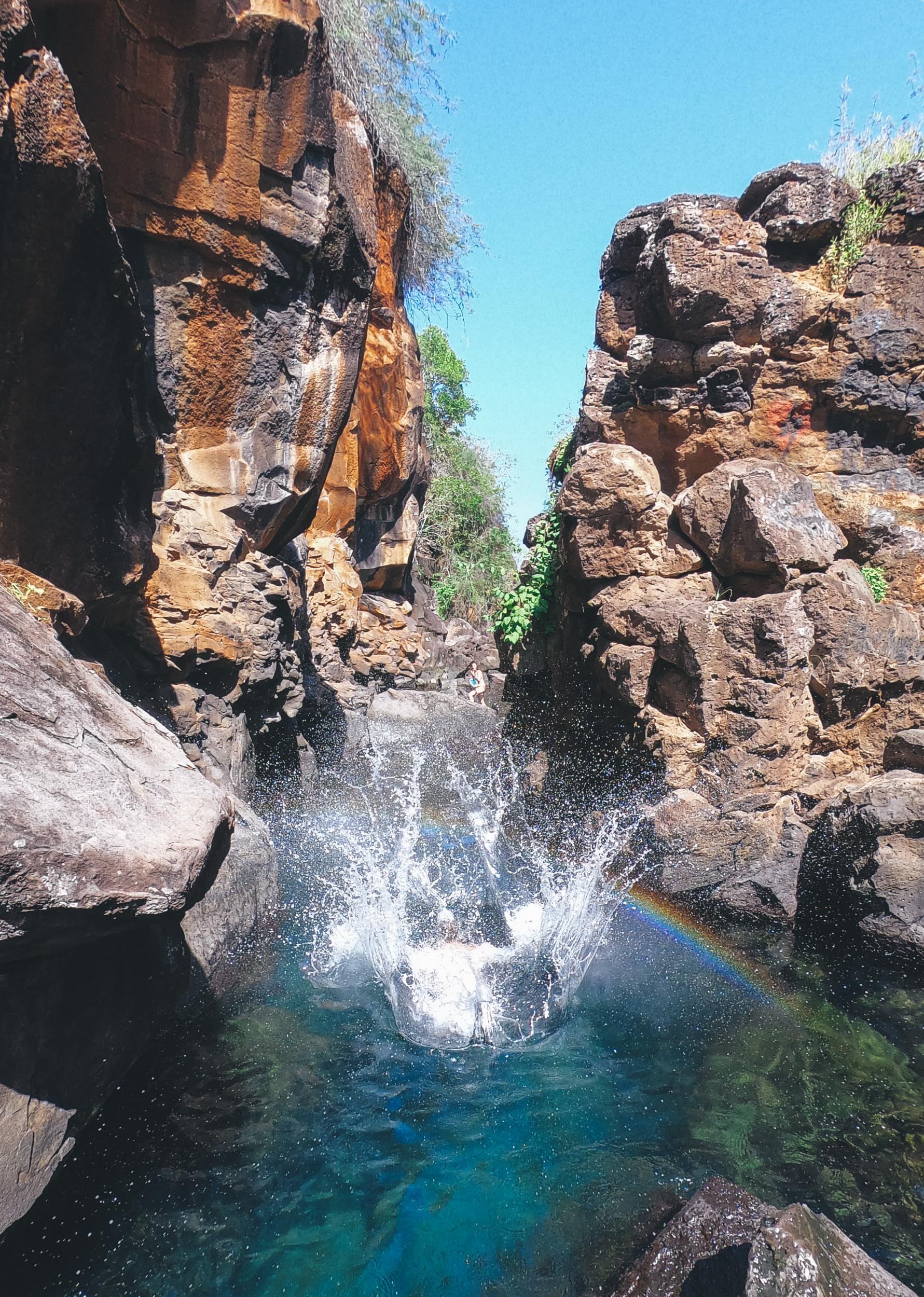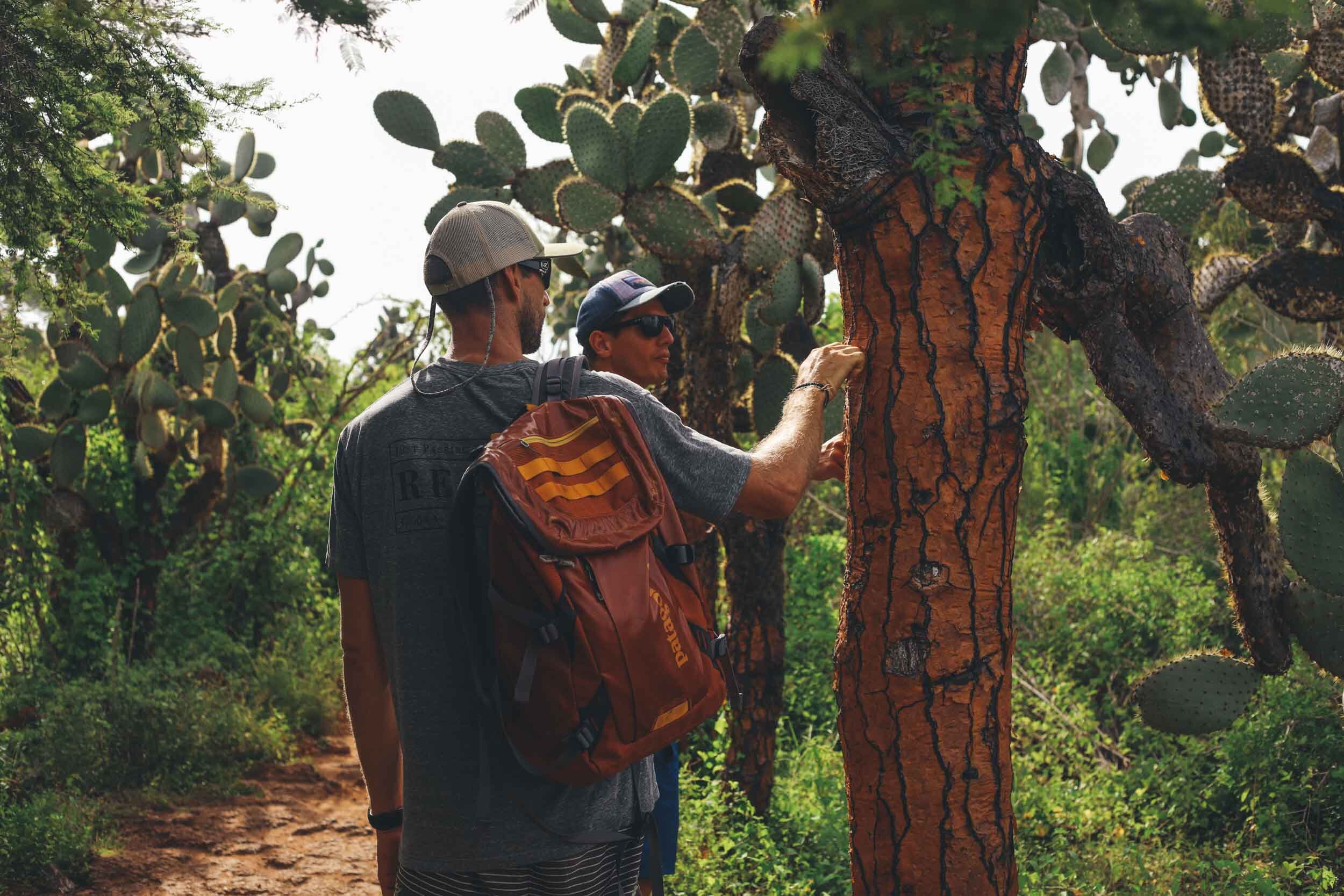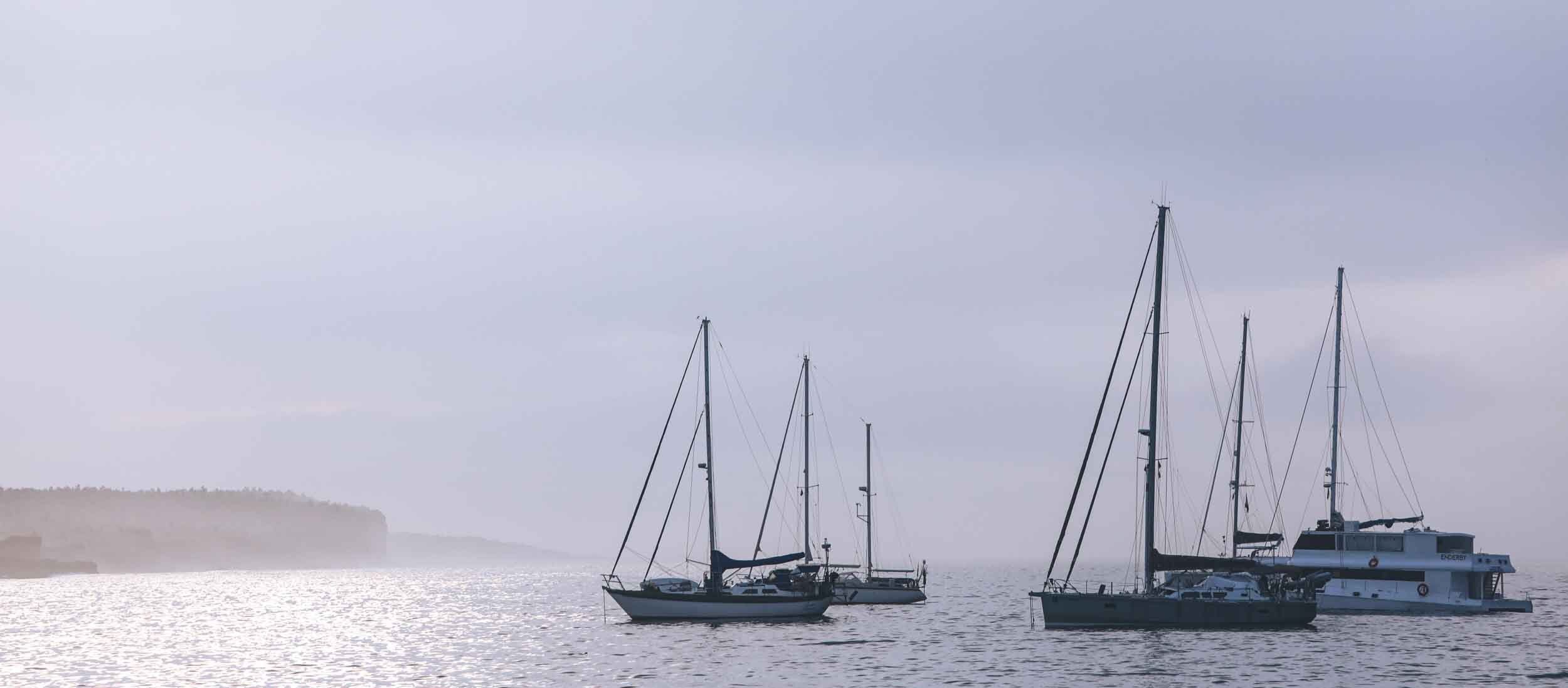Santa Cruz, Galapagos
From San Cristobal, we headed to the second-largest island of the archipelago, Isla Santa Cruz. We had a beautiful sail over to the rolliest anchorage we’ve ever visited. As we sailed in the port captain announced a high wind and surf advisory and we definitely felt it. The wind and swells rolled straight through the anchorage, making it the worst week of sleep we’ve ever had on Agape. Luckily in such a beautiful place we didn’t spend much time on the boat.
Isla Santa Cruz is home to the largest town in the Galapagos, Puerto Ayora, it’s the economic center of the archipelago. This port town is full of restaurants, souvenir shops, bars, internet coffee shops, and markets. Of all the inhabited islands in the Galapagos, Santa Cruz Island is by far the most developed and visited by almost every traveler making their way to this part of the world. Isla Santa Cruz often serves as a starting point for tourists and cruise ships, as the nearby airport on Isla Baltra, makes it the easiest island to fly into for those looking to explore the Galapagos.
This island has a more backpacker, bustling feel to it, compared to the more laid back feel of San Cristobal. We’d end up spending the least amount of time here, but here are some of the highlights.
Snorkeling at Las Grietas:
Las Grietas is a fissure in lava rocks that has created a series of narrow crevices filled with crystal clear water. It’s over 10 meters deep, 7 meters wide and 100 meters long, and fed by an underground river from one end and ocean water from the other. The water is cool and brackish, surrounded by cliffs of dark volcanic rock rising up on each side, creating a dramatic contrast against the emerald green water. This was one of our favorite things to do in Puerto Ayora and it was a beautiful walk out of town through all sorts of terrain. The path leads you straight to the freshwater canyon. As with most exotic and unique places, this is definitely a tourist hotspot, and rightfully so. Who wouldn’t want to spend the day in cool refreshing crystal clear water… with 50 of your new closest friends?
The Lava Tunnels:
Lava tunnels are formed during volcanic eruptions, as lava flows down the sides of volcanos and along the earth, it cools and hardens on the surface, while hot lava continues to flow underground like a river. The archipelago has an abundance of lava tunnels as it sits on a tectonic plate – the Nazca plate – which is moving south and under the South American plate, at a reported rate of about 6.5 centimeters a year.
There are many lava tunnels here to be explored and new ones constantly being formed and unearthed by ongoing volcanic eruptions on the island. The best lava tunnels, however, can be found here in Santa Cruz. There are many tour operators offering guided walks through the tunnels, but for $10 USD you can jump in a taxi and go on your own.
It's a great activity to do during the heat of the day as the tunnels are nice and cool, and out of the sun.
Tortuga Bay:
On the south side of the island, you can find the stunning white sand beach of Tortuga Bay. This lovely stretch of coastline is named for the sea turtles which come to nest here. The beaches here, Playa Brava and Playa Mansa, are home to many marine iguanas, and it’s probably one of the best spots to observe them. We saw dozens of iguanas crawling along the sand, sleeping in the sun, piling on top of each other under the trees, and swimming in the lagoon. They were everywhere!
Getting to Tortuga Bay is possible by a variety of means. You can take a tour, water taxi (about $1o) or walk to the bay from Puerto Ayora. If you plan to walk, take the trail from the main water taxi dock, it’s approximately 1.5 miles (2.5 kilometers) and takes between 30 to 45 minutes, depending on your pace. We recommend grabbing an ice cream along the way!
If you enjoy bird watching, the trail is a great spot to look for warblers, finches, and mockingbirds, and as you near the beach keep an eye out for pelicans, boobies, and maybe even a passing flamingo.
The Charles Darwin Research Station:
Named for Charles Darwin, the famed British naturalist who visited the islands in 1835 aboard the HMS Beagle, the Charles Darwin Foundation was founded in 1959. The center is dedicated to the preservation and conservation of the Galapagos Islands and the animals and plants that live here.
They have many ongoing projects, usually around the removal of introduced and invasive species, monitoring the health of the Galapagos tortoises, marine iguanas, penguins, sea turtles, and sharks, as well as several endemic plant populations. Their research also helps the government set fishing limits and put other protective measures in place.
As with many of the exhibits here, it's free and open to the public. There are several educational exhibits and displays, such as shells from different tortoise species, and displays concerning introduced species and the harm they cause. The foundation has a program that is run in conjunction with the Galapagos Park Service, raising young giant tortoises to later be released back out into the wild. Since 1970, more than 2,000 tortoises have been hatched, raised, and released. It’s an important program as the tortoises are most vulnerable when they are little. Introduced species (particularly ants and rats, but also cats and dogs) can prey on them before their skin and shells get large and thick enough to protect them. They now also have a tortoise breeding program where you can observe large adults from a distance.
Scuba Diving Gordon Rocks:
North-east of Santa Cruz island lies the famous Gordon Rocks. Sometimes called ‘The Washing Machine’ it is a popular site for intermediate and advanced divers as there are often challenging currents and upwellings. It is these very currents that bring the plankton to the surface, attracting large species of marine life such as Galapagos sharks, white tip reef sharks, lots of giant sea turtles, mobula rays, stingrays, eagle rays, green morays, Galapagos eels, barracudas and various reef fish. It is also one of the best places in the world to find schooling hammerhead sharks and the weird and wonderful oceanic sunfish (mola molas).
Since the boys weren’t able to dive I went out for a girls' dive trip with my new friend Michelle. We had two spectacular dives here at Gordon Rocks. Unfortunately, my GoPro was acting up and I missed filming all the massive Galapagos sharks, mobula rays, turtles, and schooling hammerheads. Luckily our dive guide captured the best moment of the day on his camera. Watch here!
We were also lucky enough to see a massive tiger shark swim under the boat while having lunch up on deck!
Our favorite thing to do in Santa Cruz wasn’t as adventurous or exciting as the other activities. For us, the highlight of the island was visiting our beloved ice cream shop, Coco Fresh. For just ONE DOLLAR you could have the best vanilla or chocolate soft serve ice-cream of your life! And for an extra 25 cents you could enjoy the freshly made coconut flavor.
I can honestly say we had at least 30 ice creams each while here, maybe more for Wilky and I. Every time we would walk past the shop, conveniently placed on the main stretch of town, we’d buy one or two depending on how hot and tired we were.
When we know that we won’t have ice cream for a long time, we tend to overindulge, and with our looming Pacific crossing ahead of us we consumed an incredible amount of soft serve.
After eating our weight in ice cream and loading the boat with fresh food it was time to head to the island of Isla Isabell, the island we were all looking forward to exploring the most.

